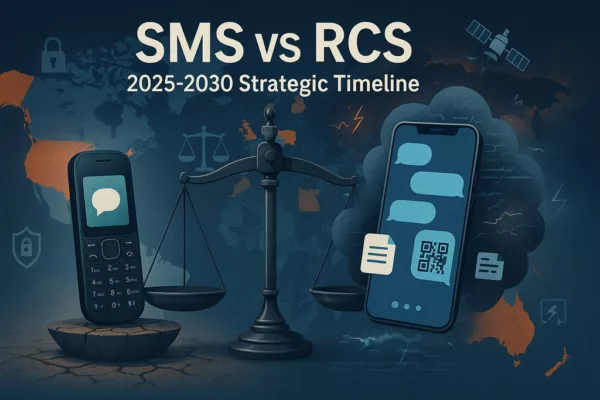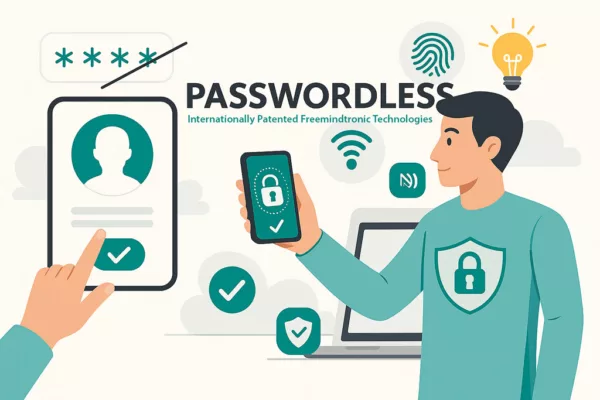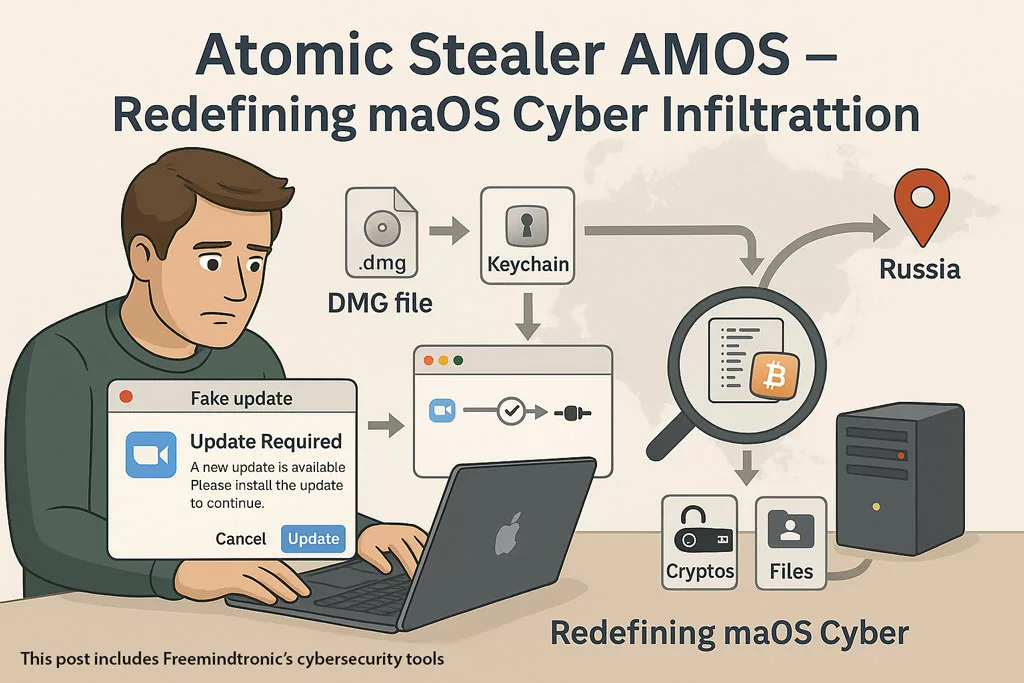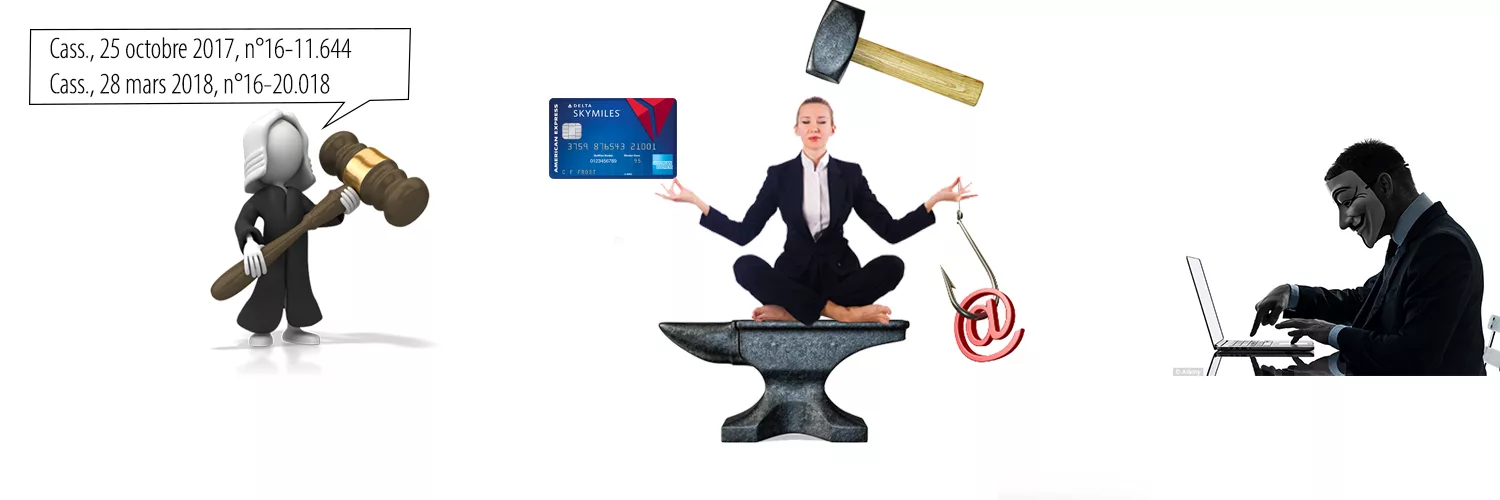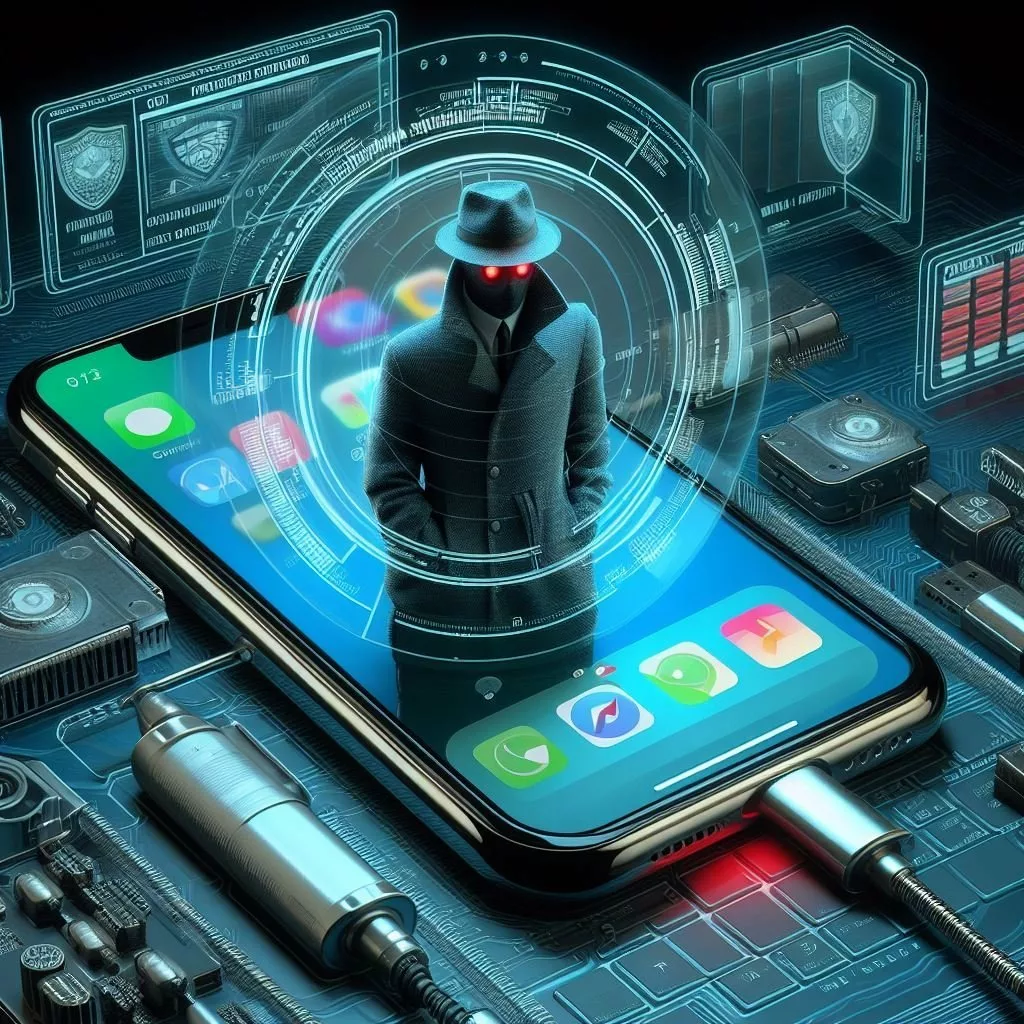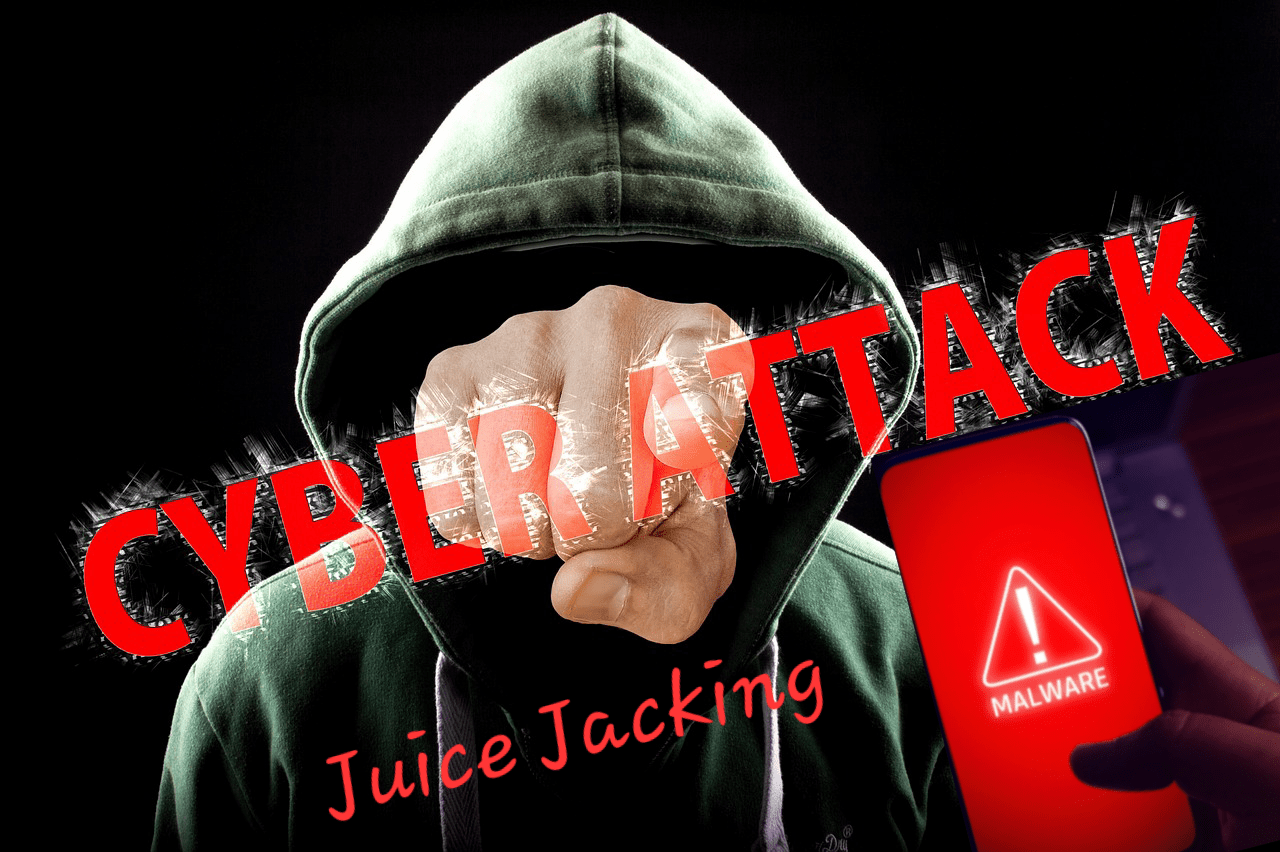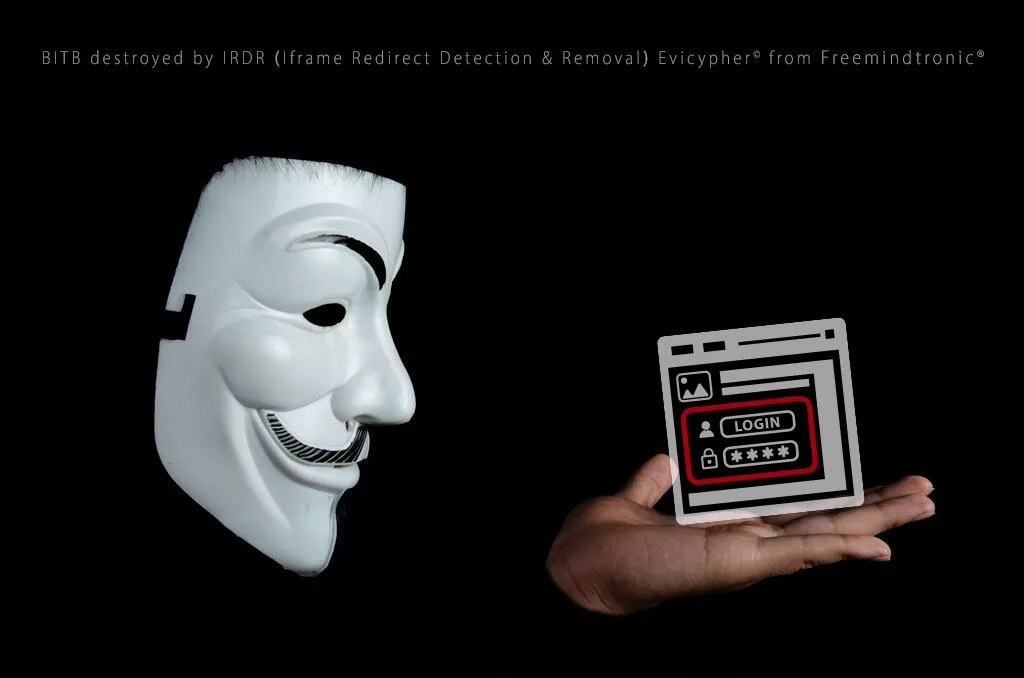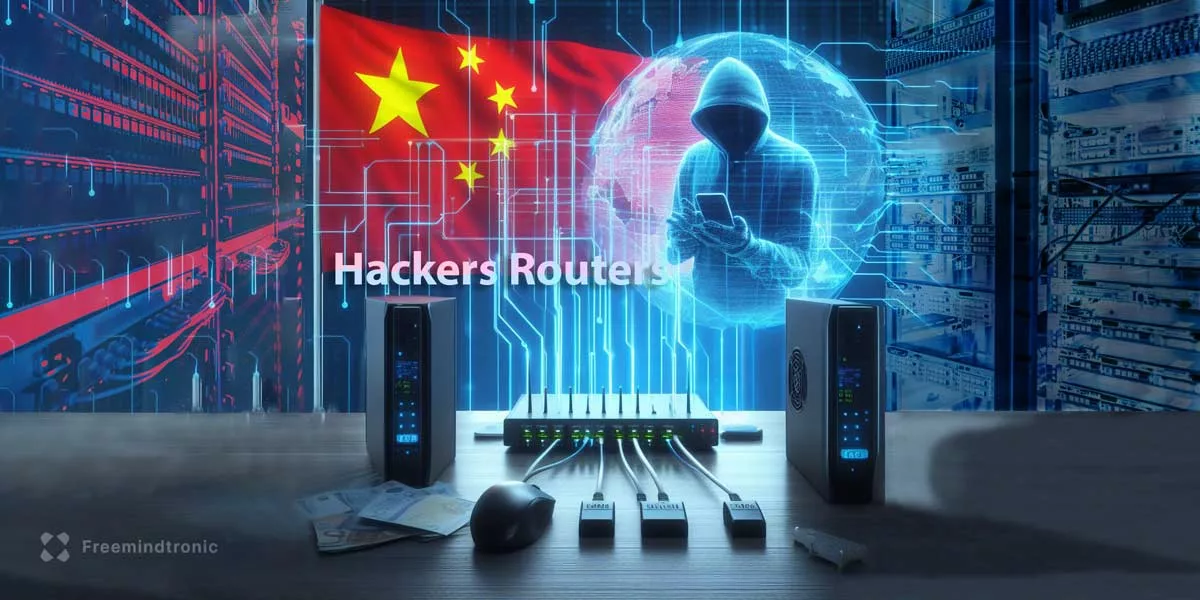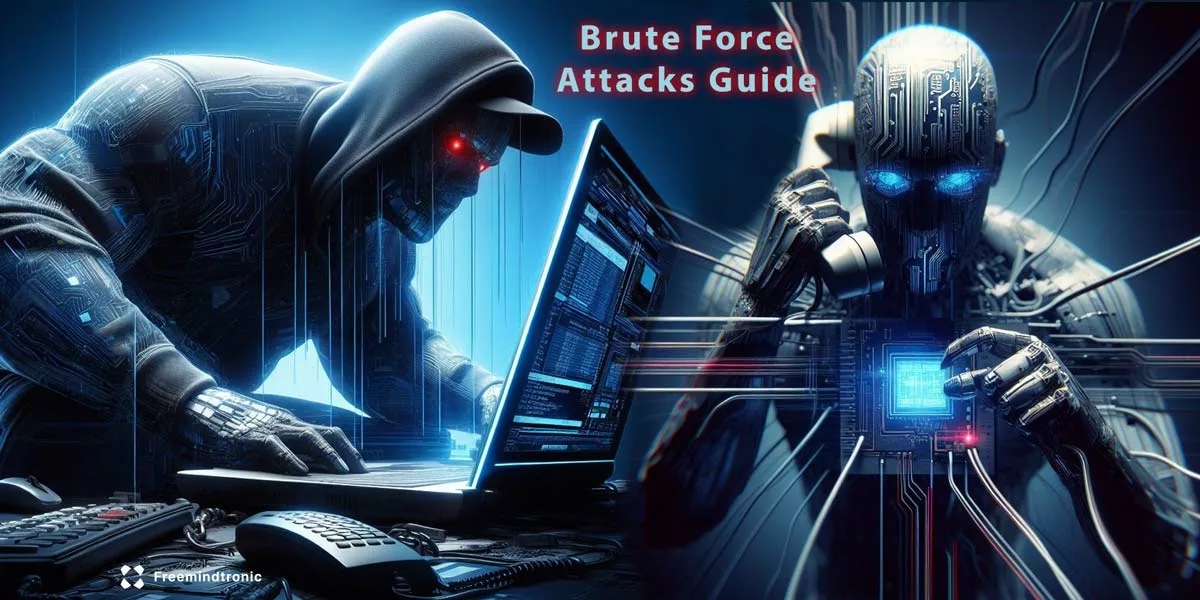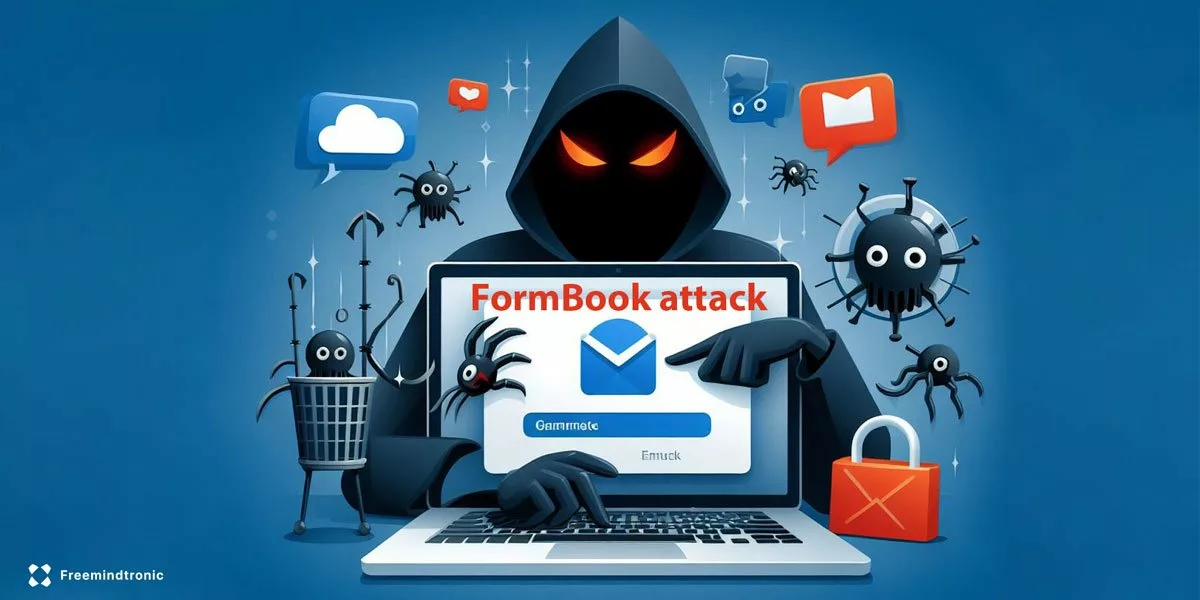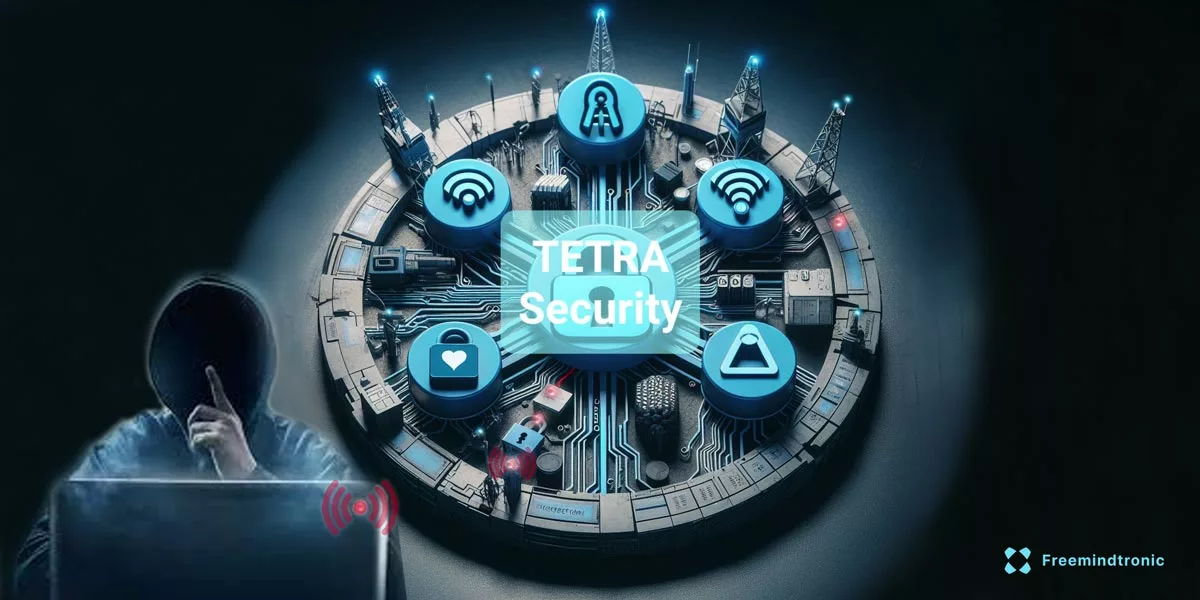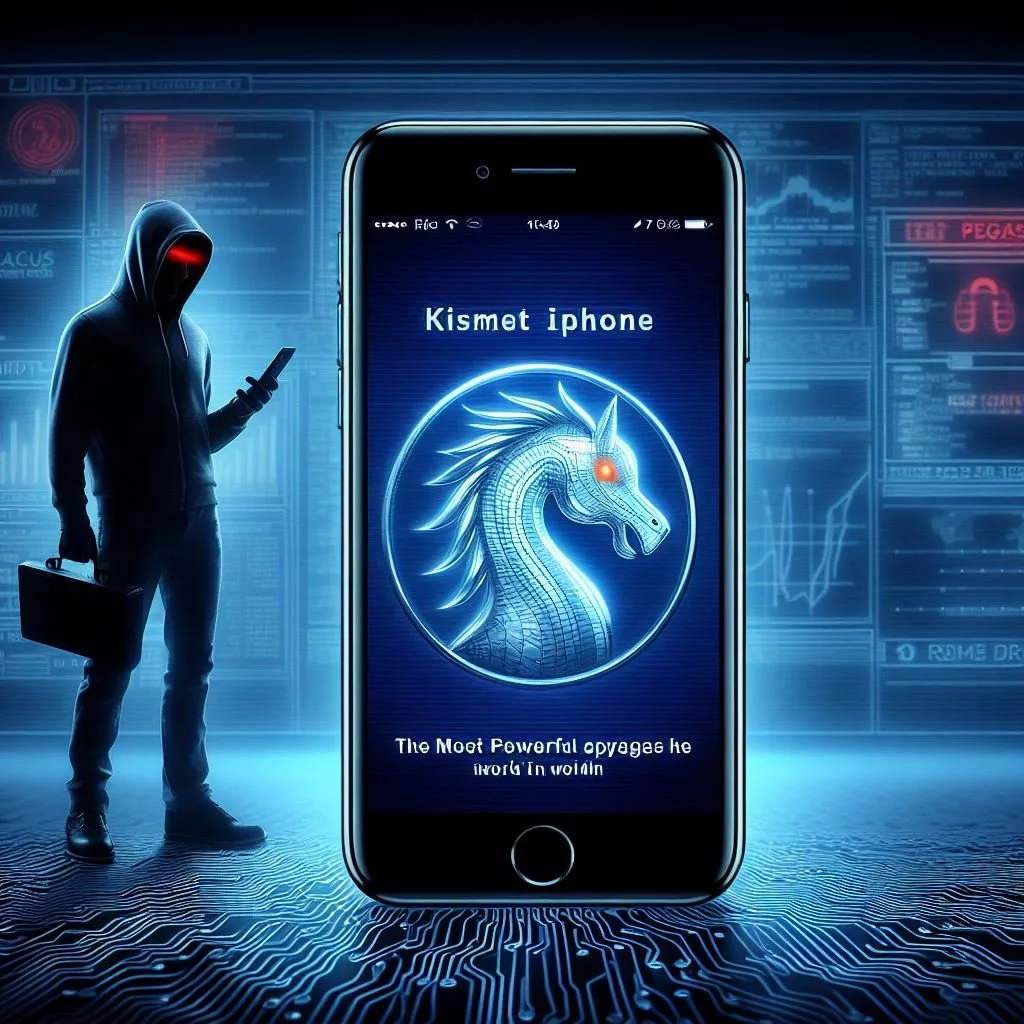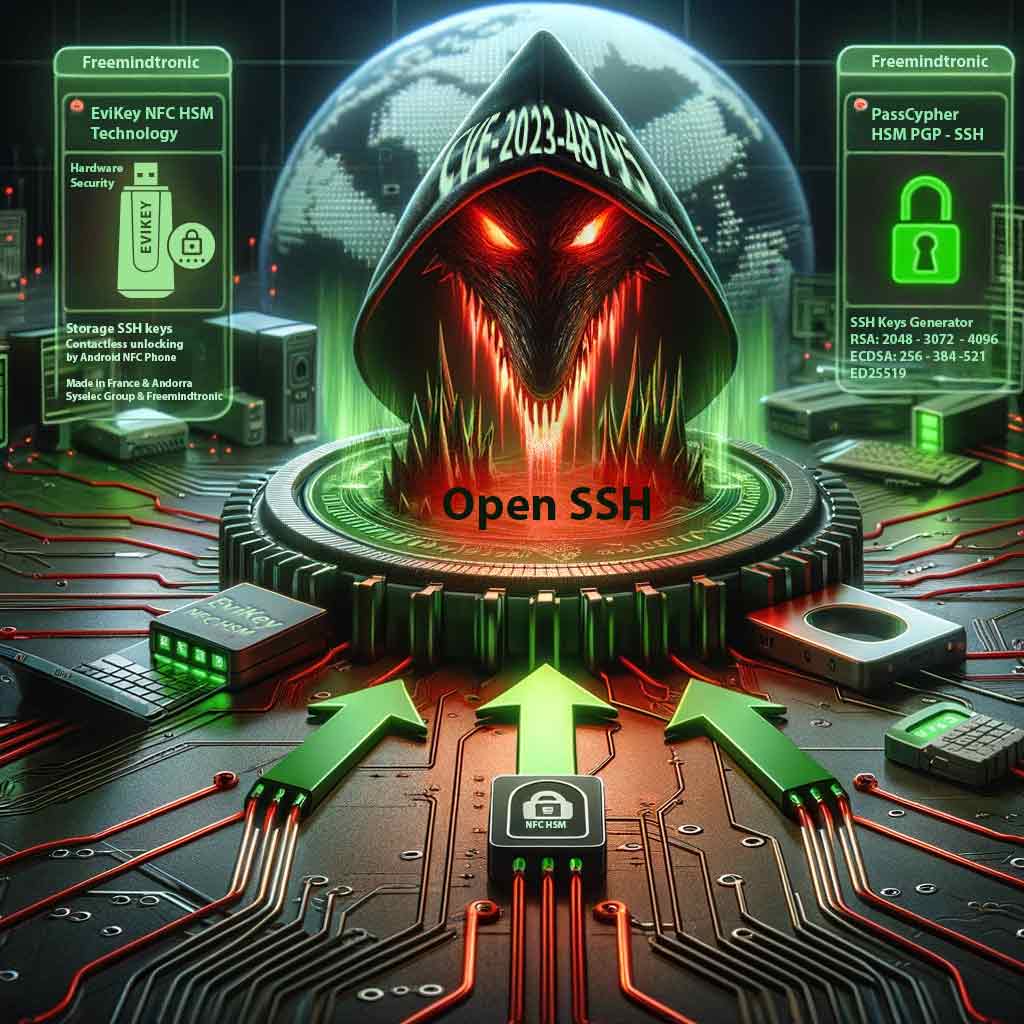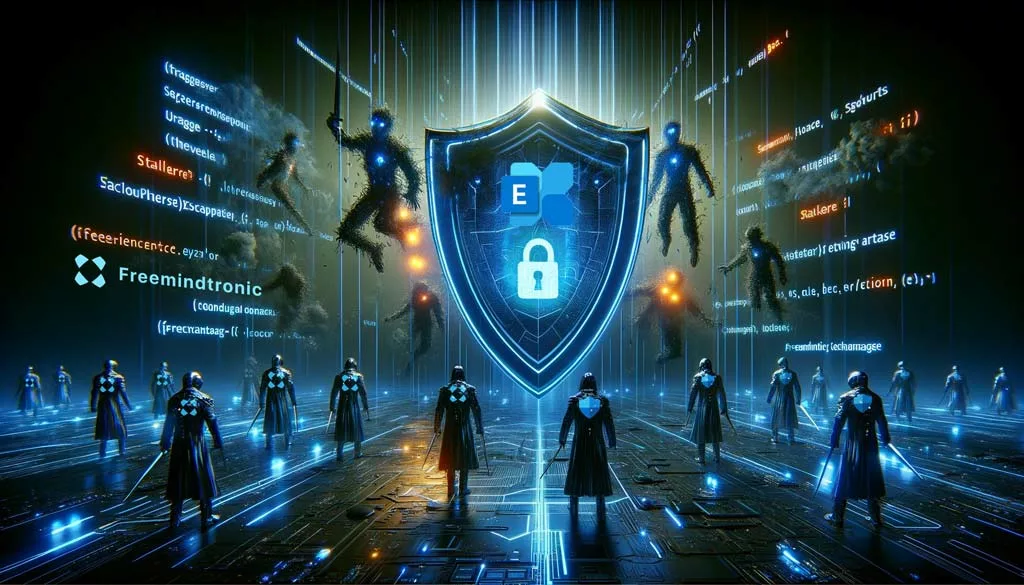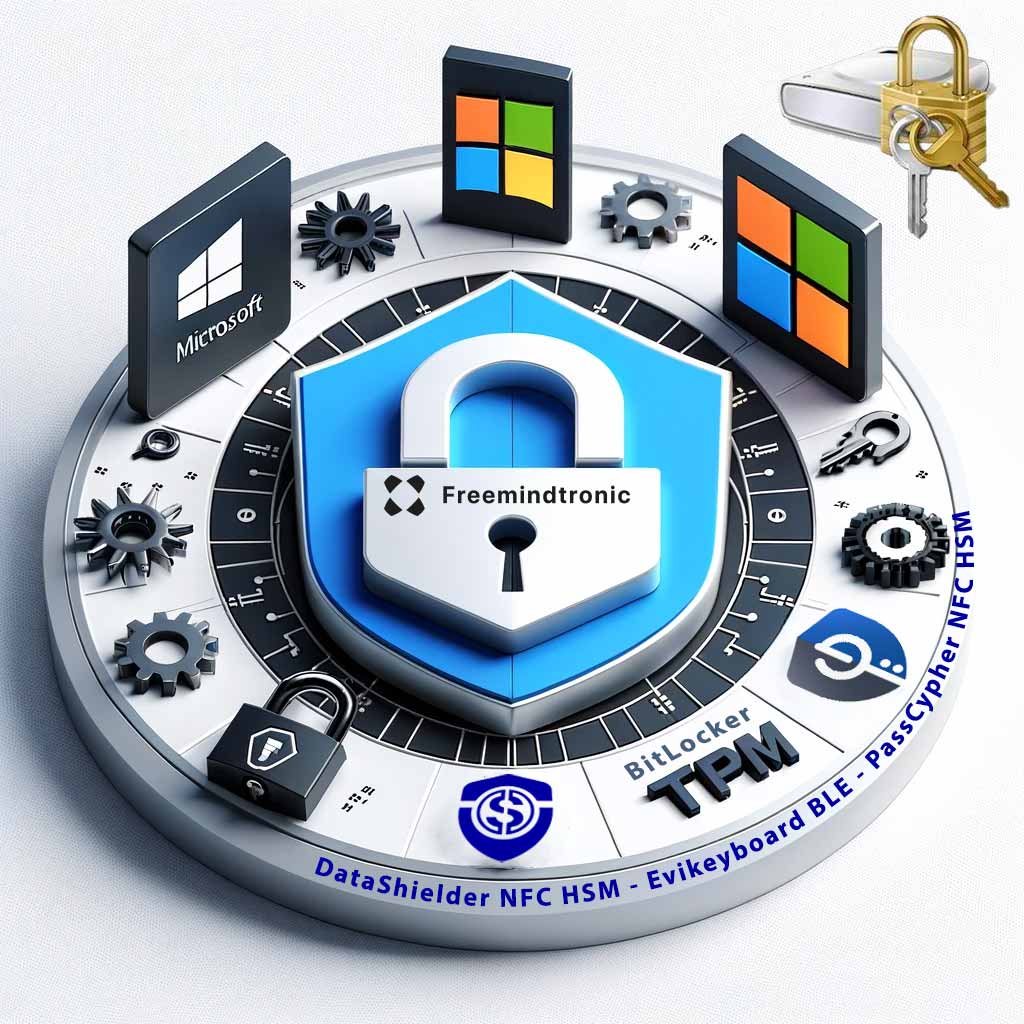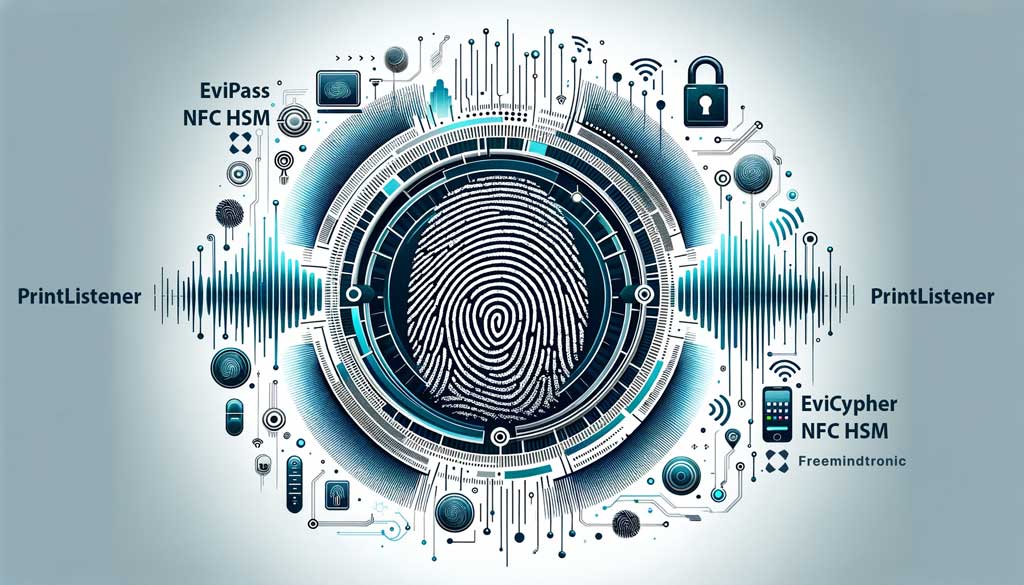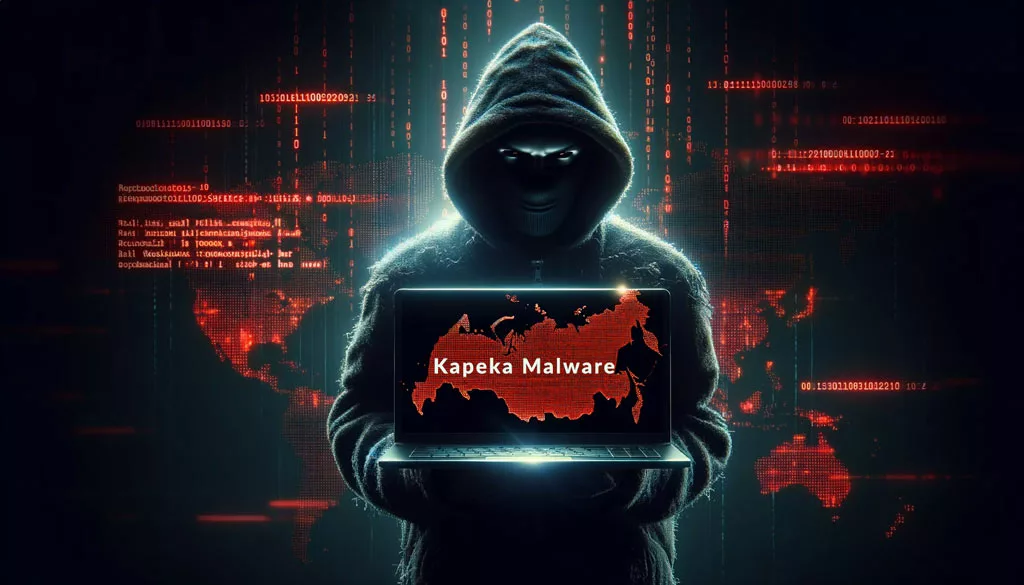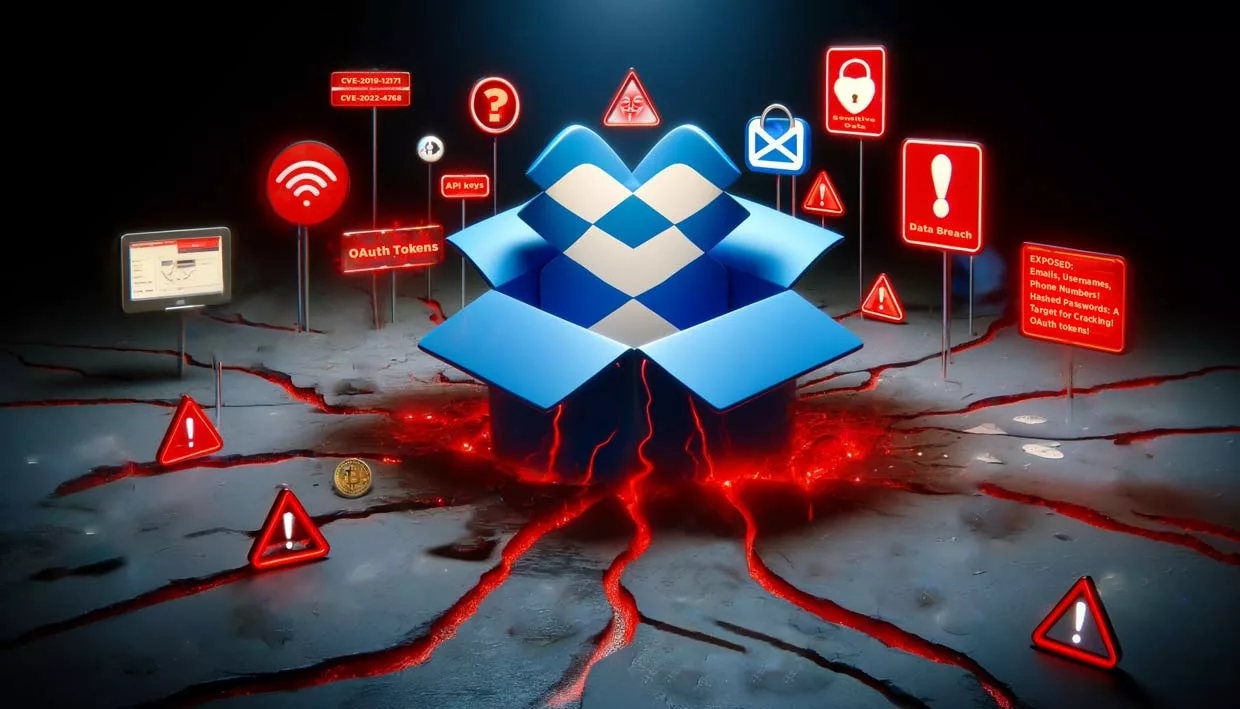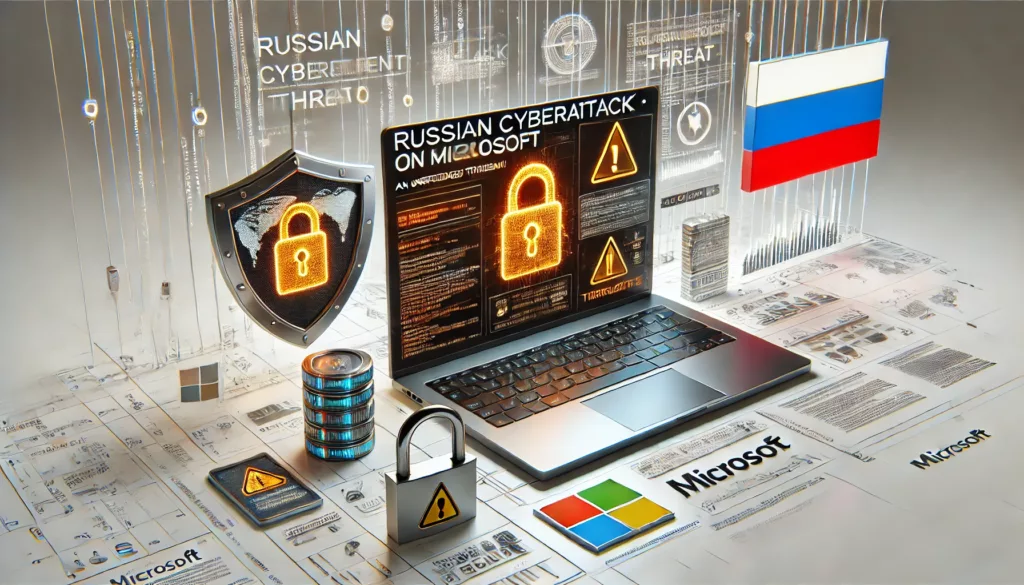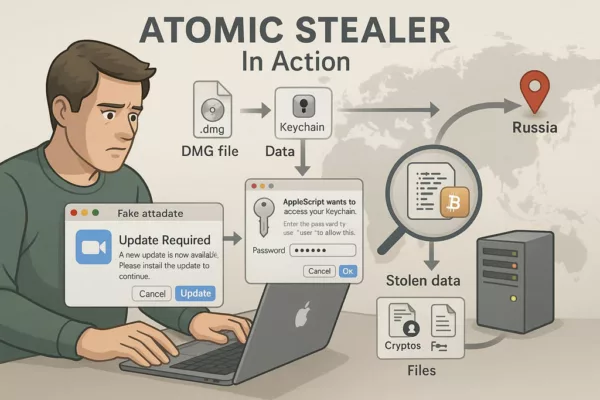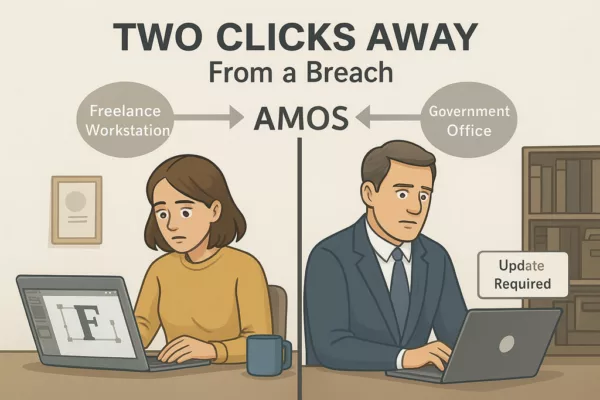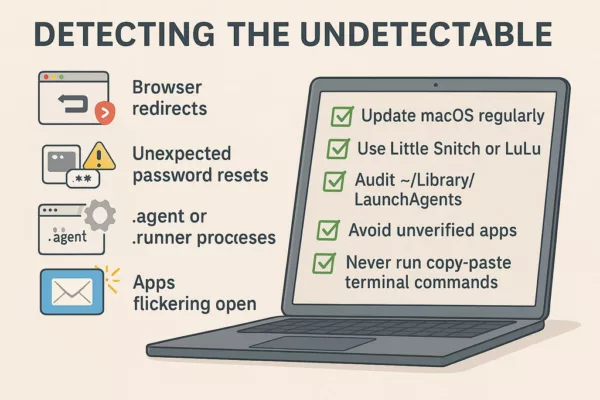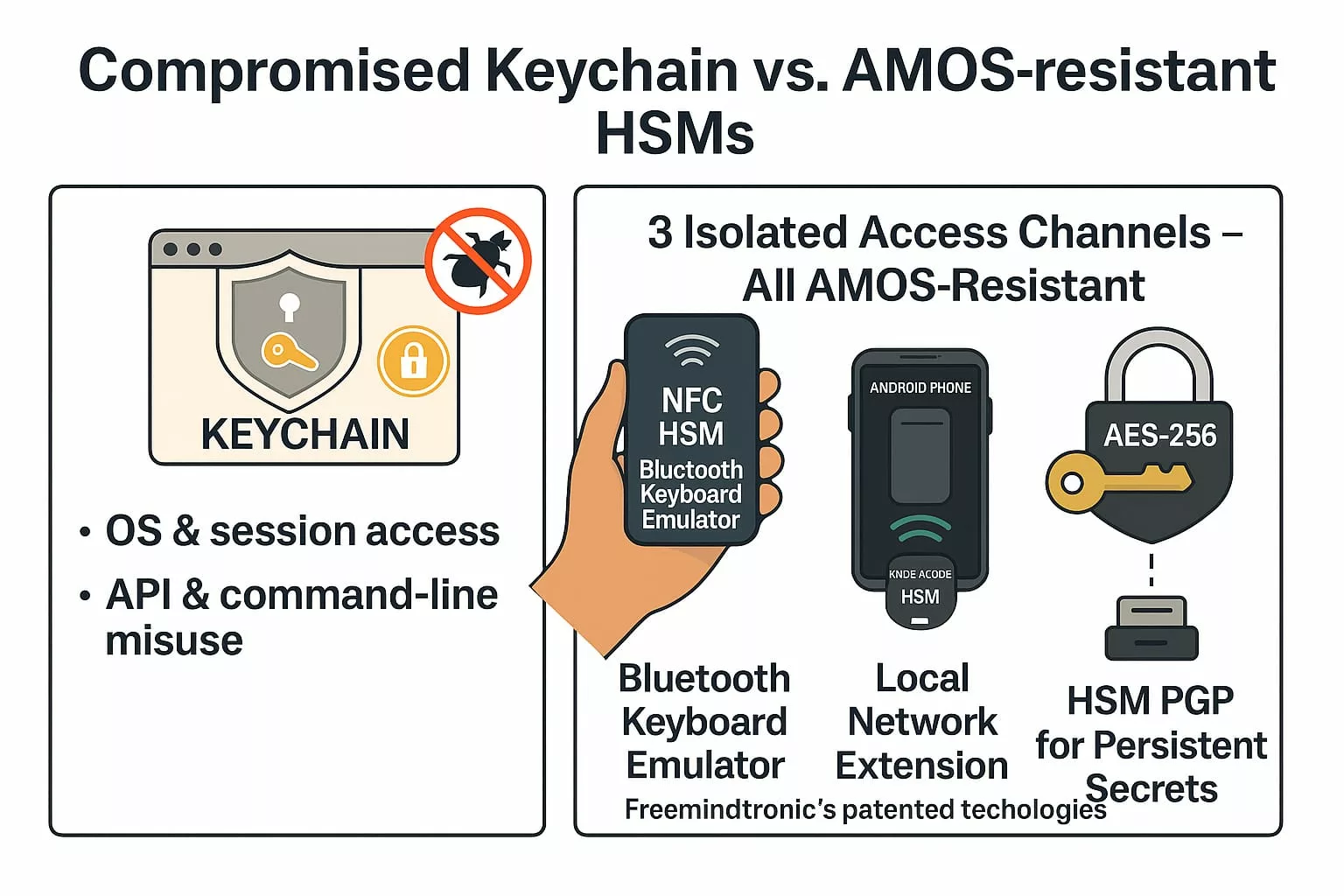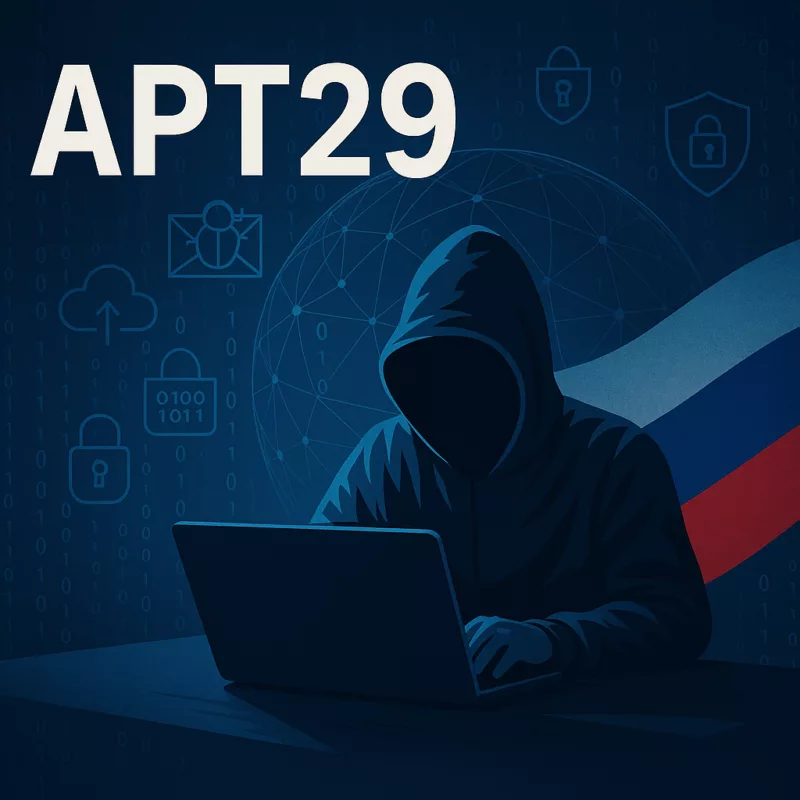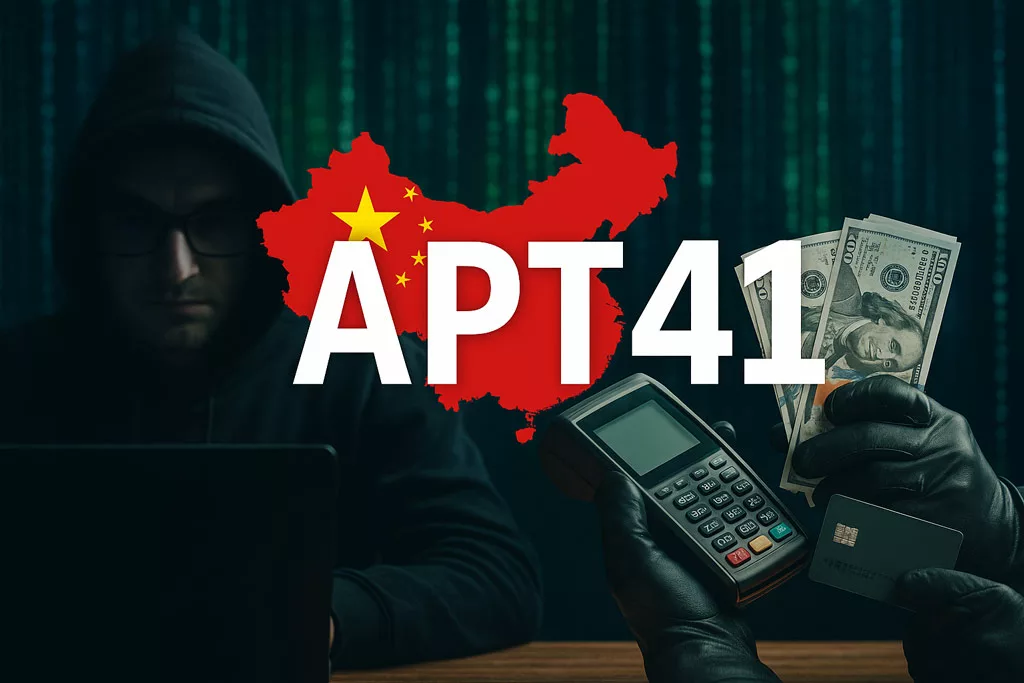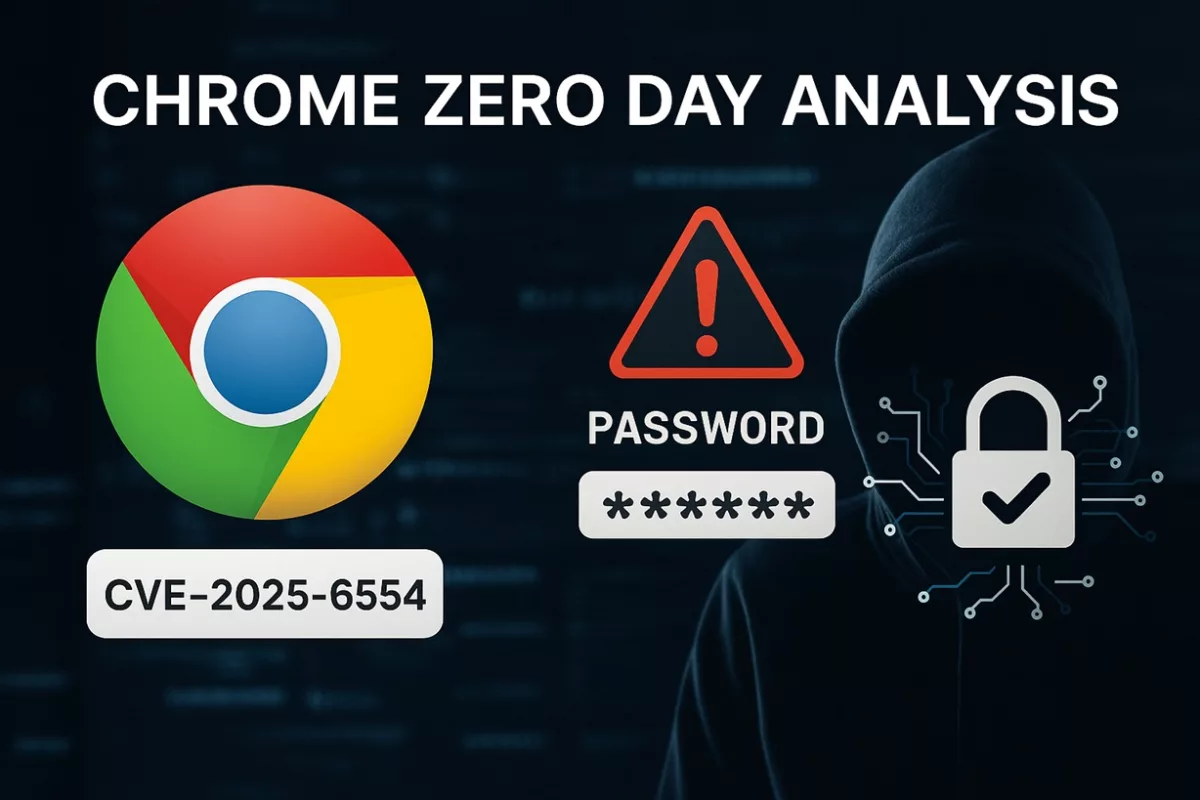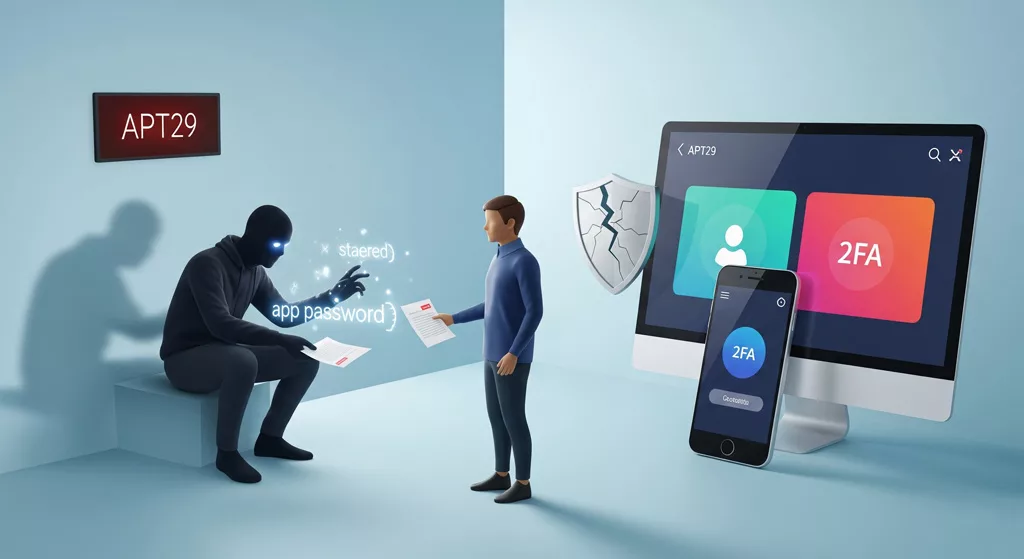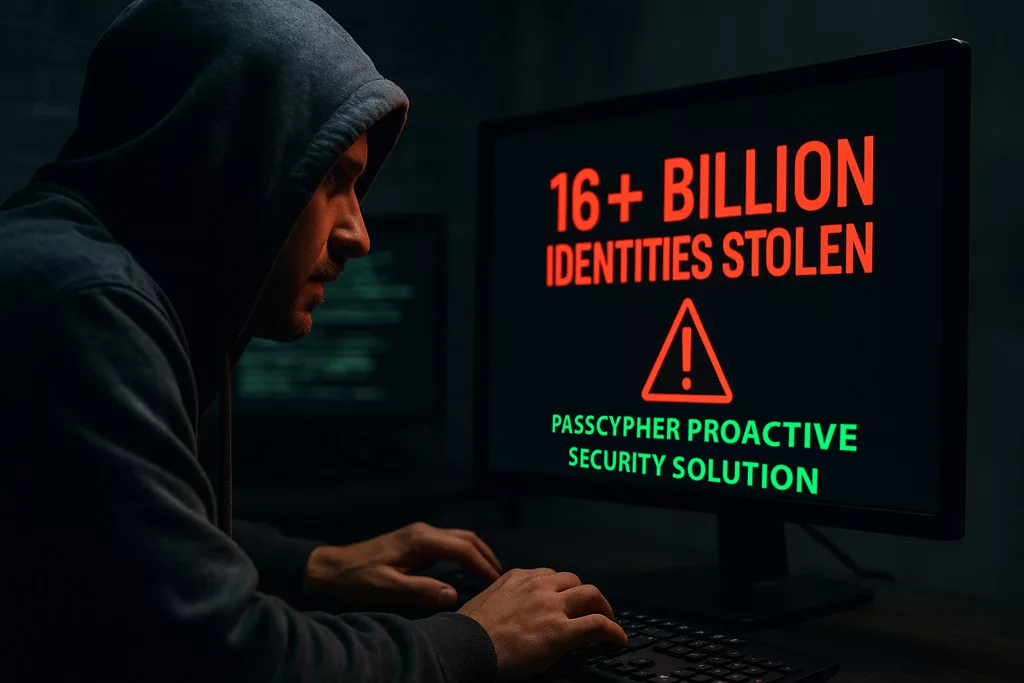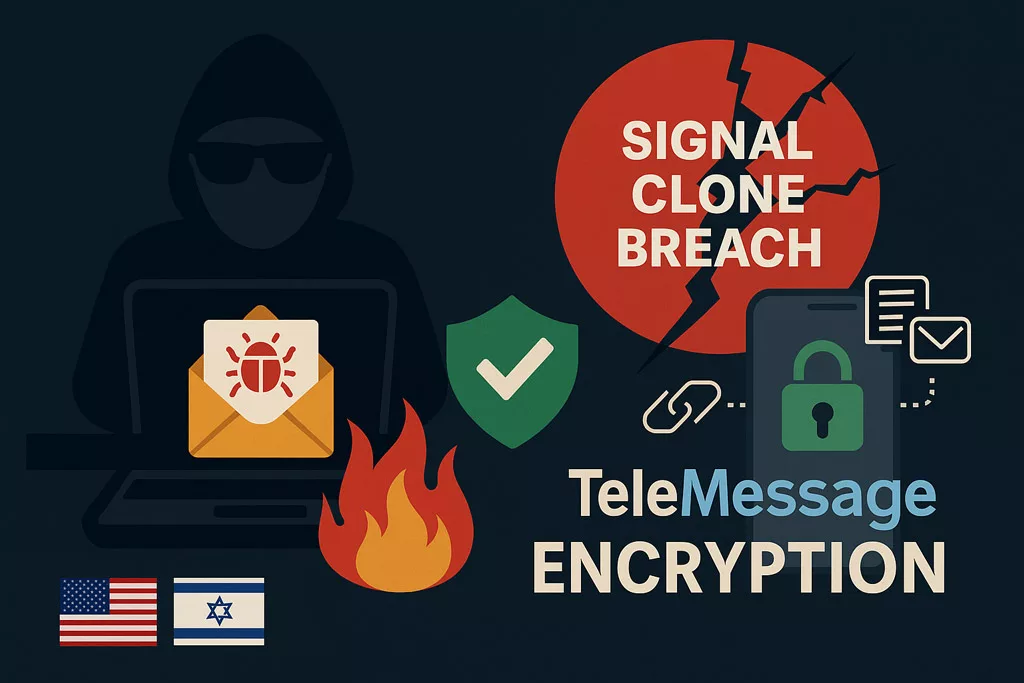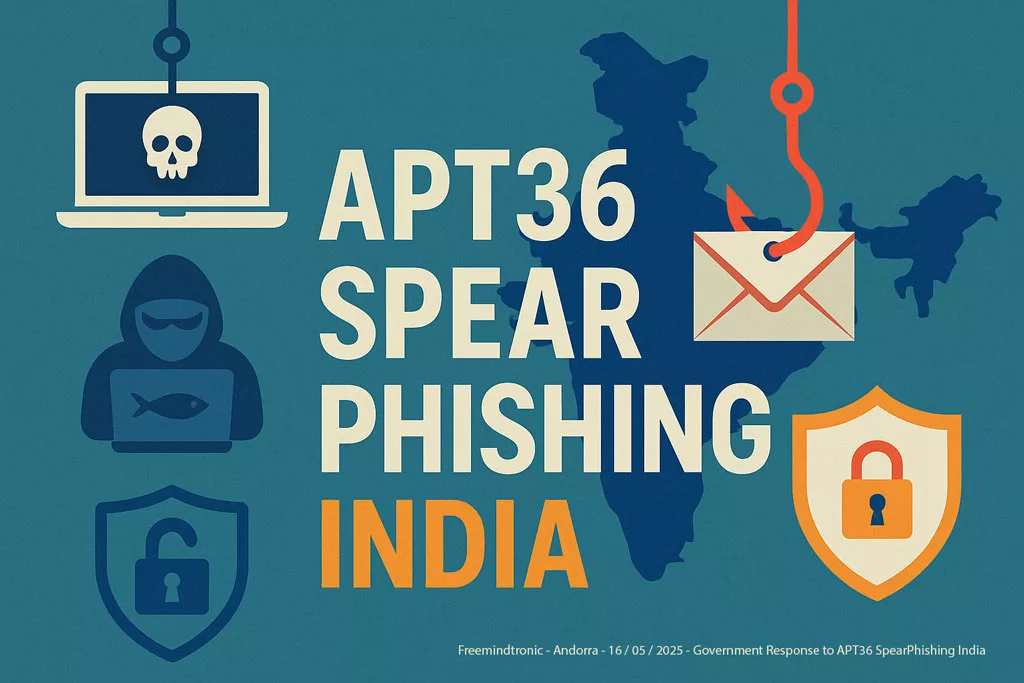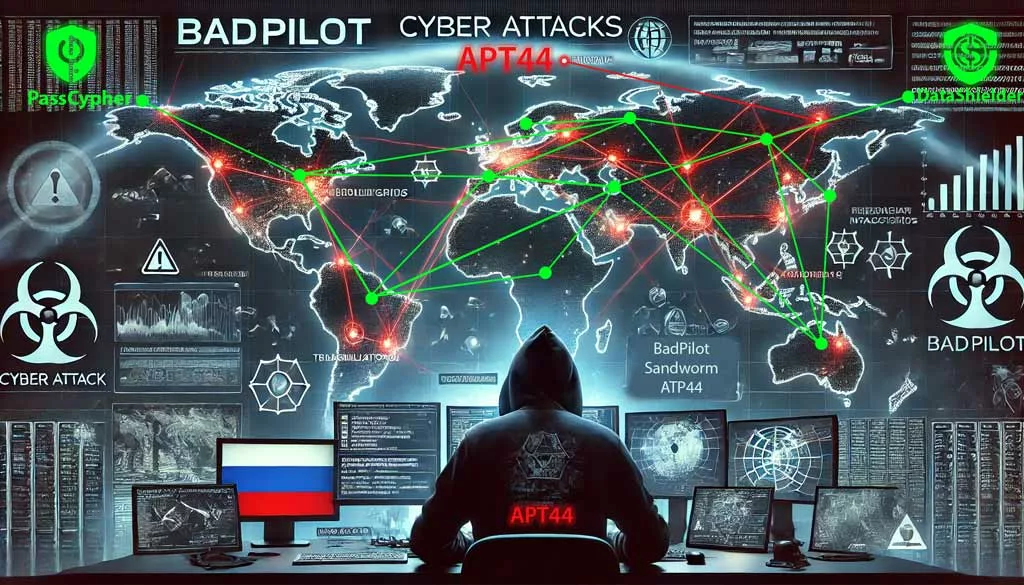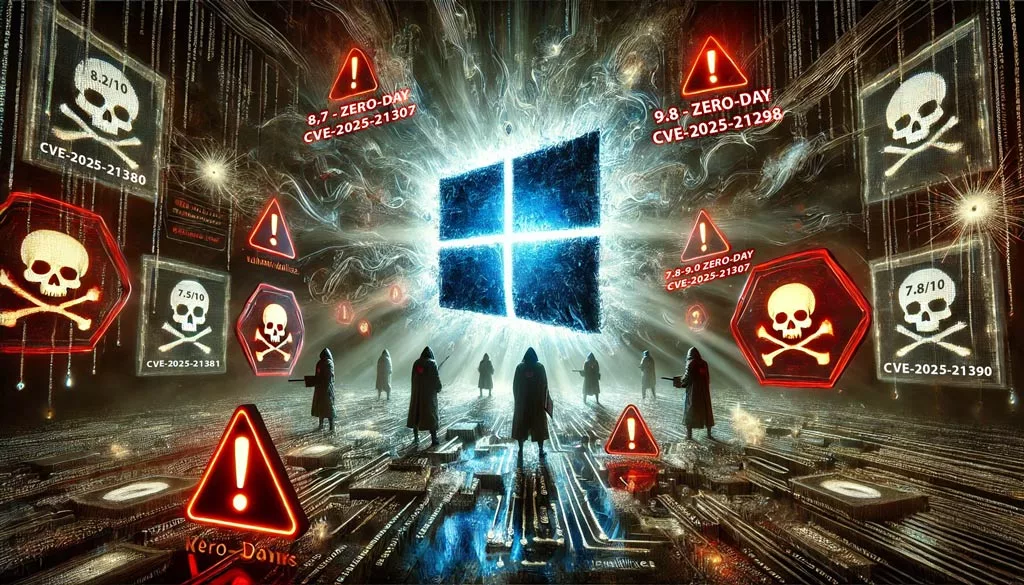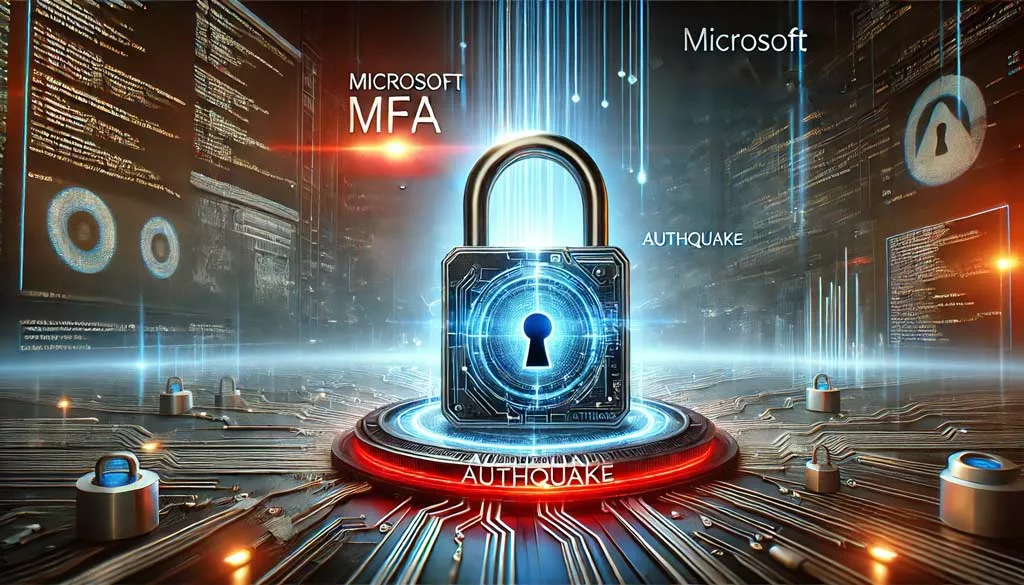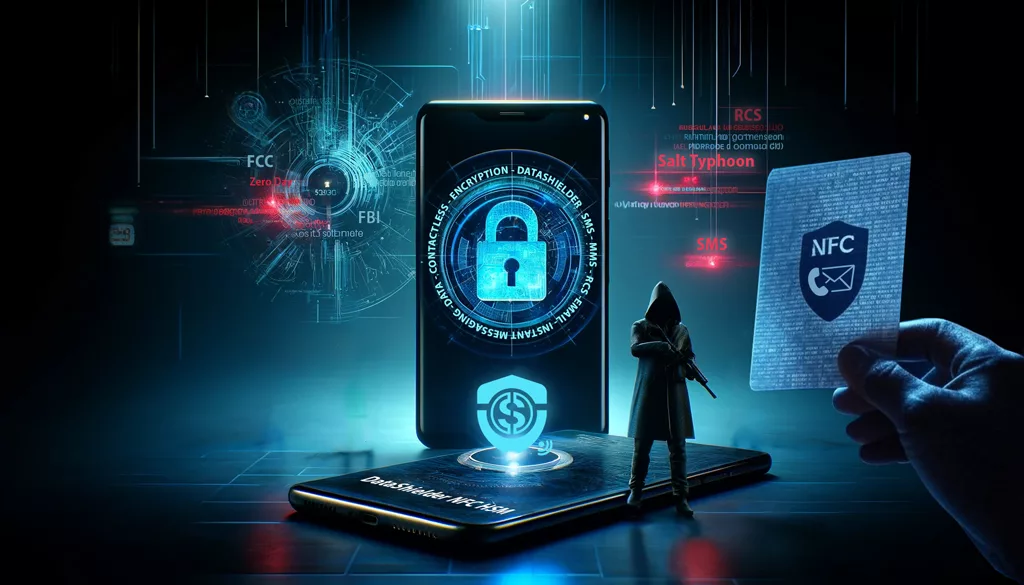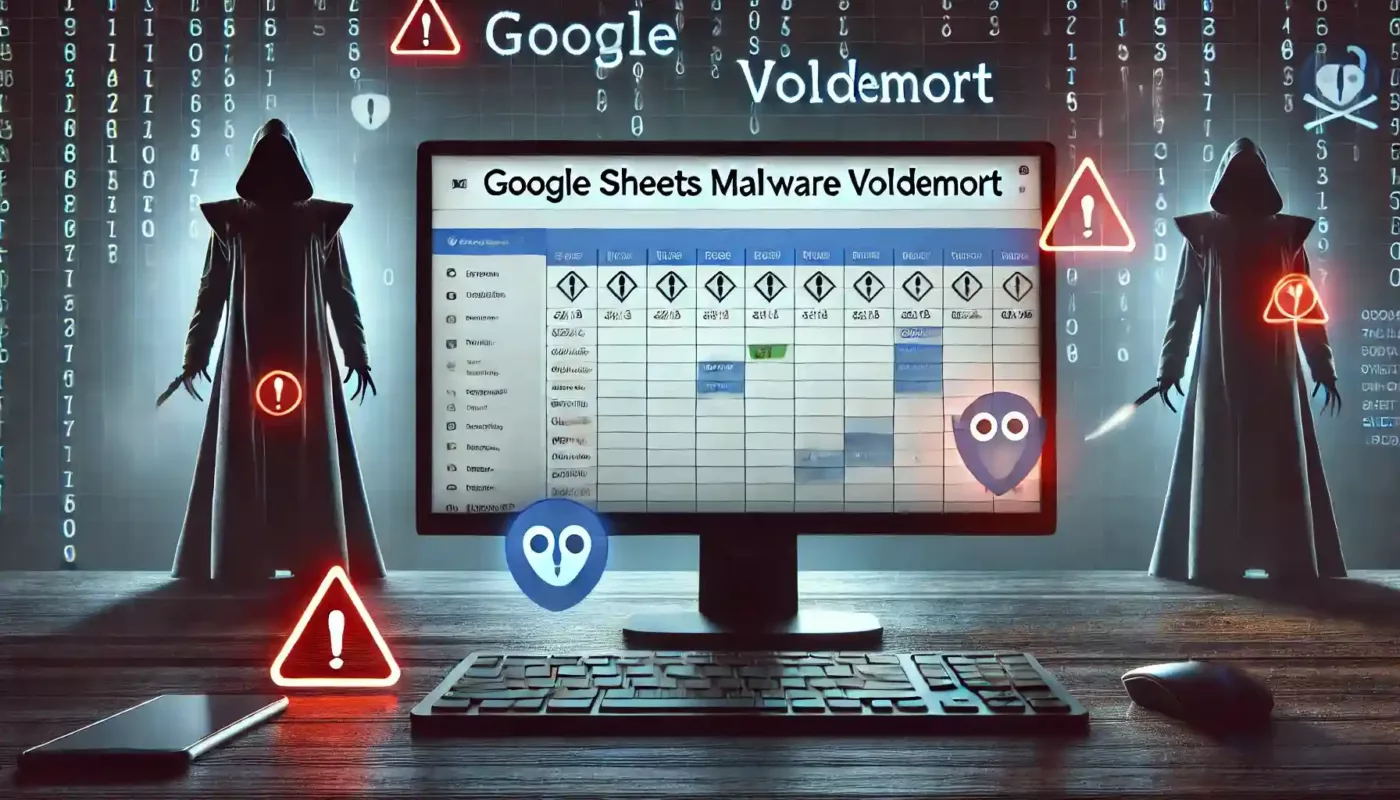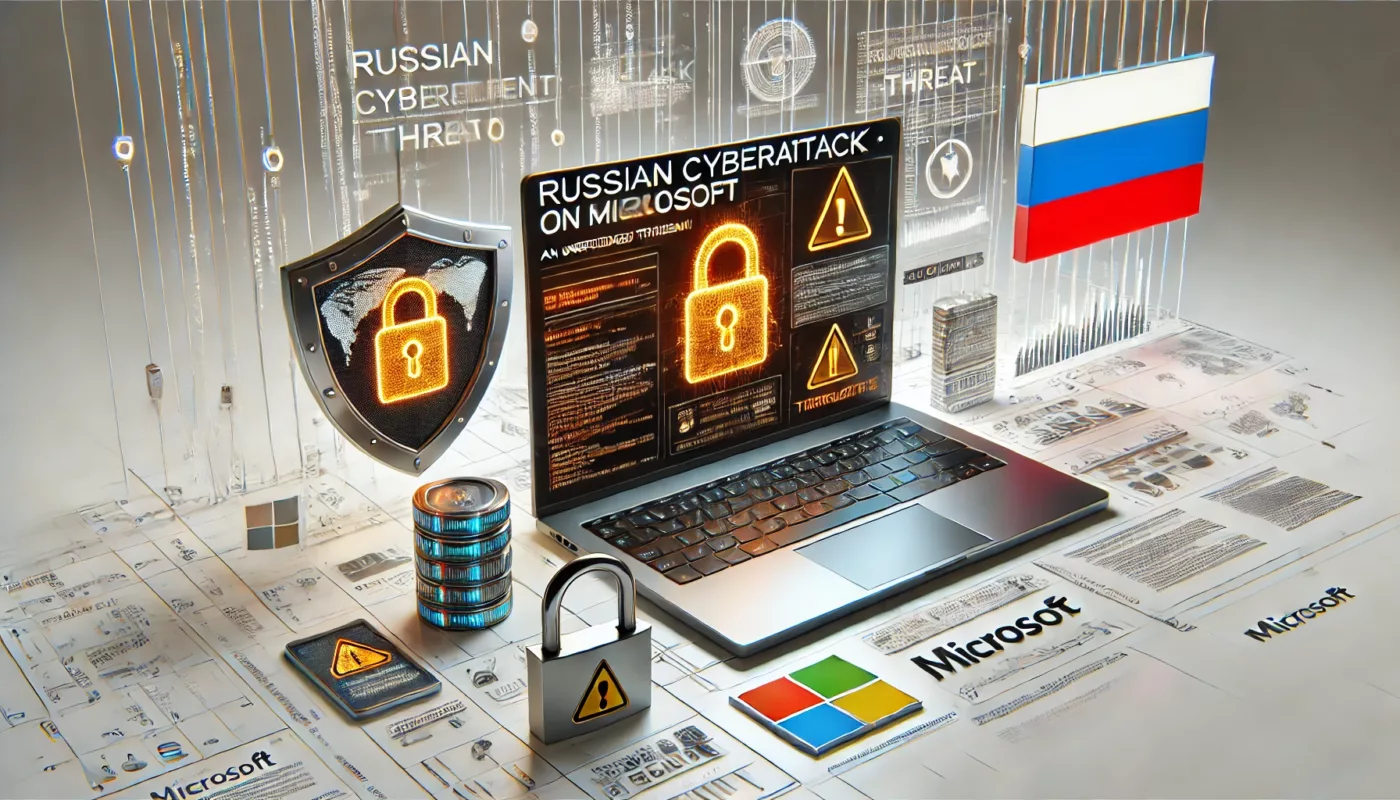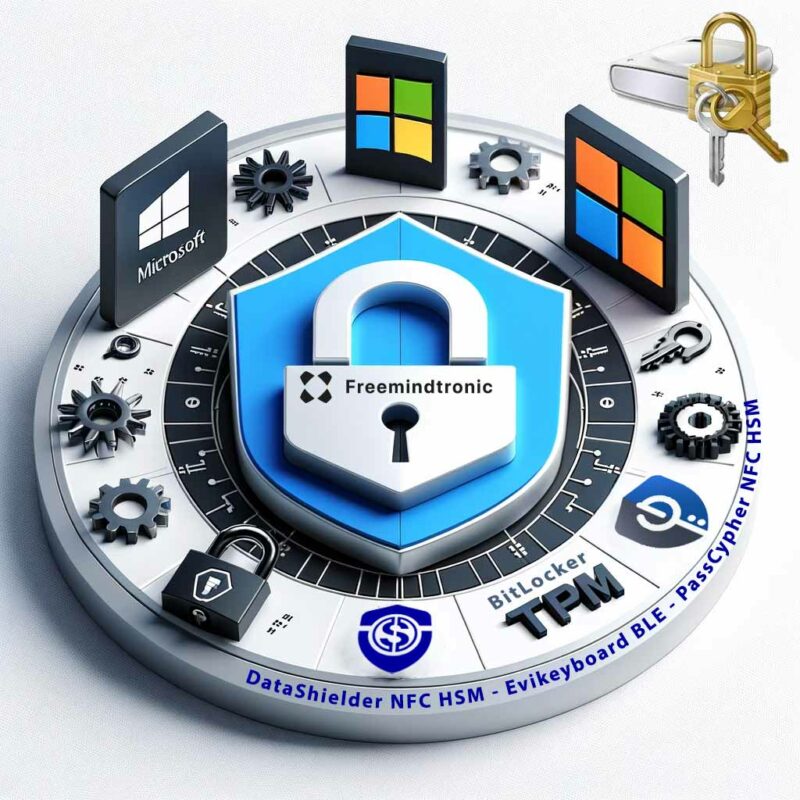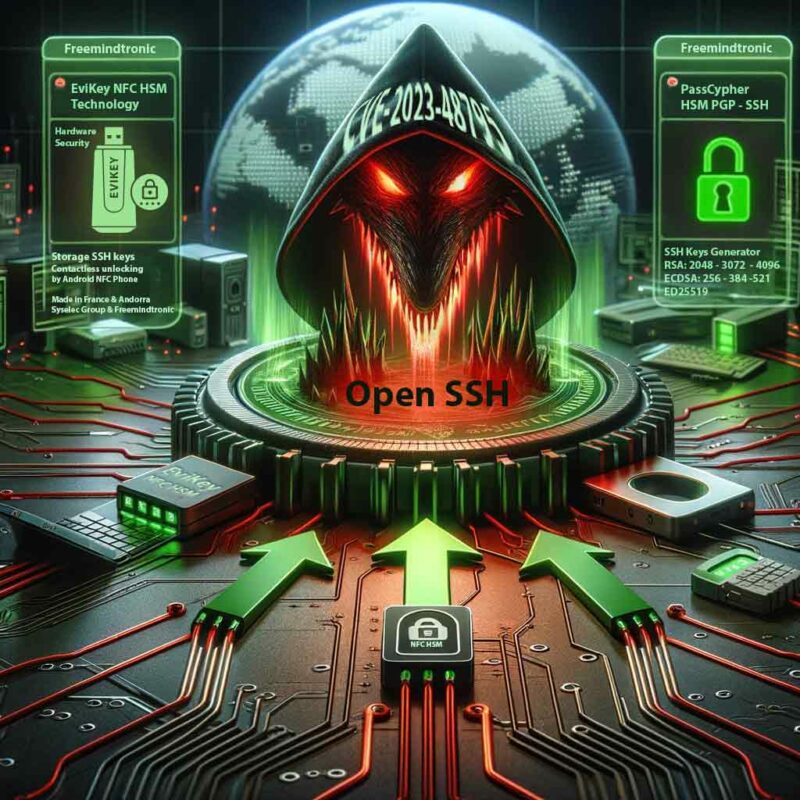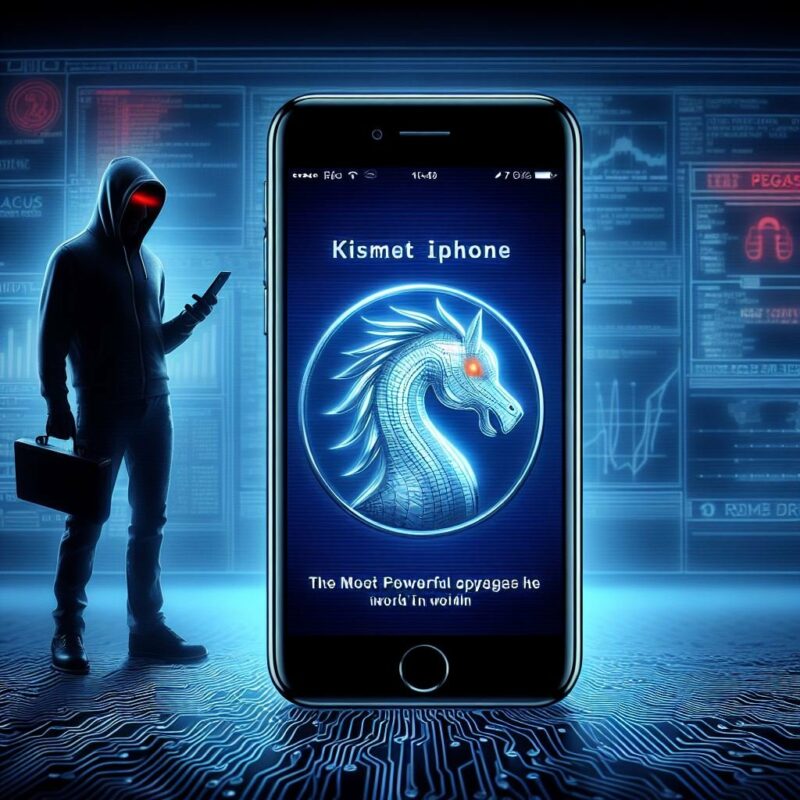Innovation of rupture is not simply a bold invention—it’s a shift in power, usage, and norms. This article explores two dominant visions of innovation, the role patents play in enabling or constraining breakthroughs, and the systemic resistance that disruptors must navigate. Using Freemindtronic’s sovereign cybersecurity technologies as a real-world case, we analyze how regulatory inertia, industrial dependencies, and biased standards affect the path to adoption. Anchored in field experience and strategic reflection, this narrative offers a vision of innovation that is resilient, disruptive, and sovereign by design.
About the author — Jacques Gascuel is the inventor and founder of Freemindtronic Andorra, where he pioneers disruptive sovereign cybersecurity technologies based on patented architectures. With a legal background and a strategic mindset, he explores how hardware-based security and normative resistance intersect in sovereign contexts. His work focuses on building autonomous systems — offline, OS-independent, and resilient by design — to address the systemic inertia in regulated environments. Through his publications, Jacques bridges field innovation, legal asymmetry, and technological sovereignty, offering a vision of cybersecurity that breaks compliance boundaries without compromising purpose.
Disruptive innovation doesn’t bloom from comfort. It emerges where certainties tremble—when new visions confront the inertia of accepted norms. In today’s strategic landscape, where sovereignty meets cybersecurity and systemic inertia blocks transformation, innovation of rupture becomes more than a buzzword. It’s a tension between evolving what exists and inventing what doesn’t. Many organizations believe innovation must adapt to existing frameworks. Others argue real progress demands defiance—crafting new usage models, new markets, and entirely new expectations. This friction fuels the deeper dilemma: should innovators conform to dominant systems or design alternatives that reshape the rules? In practice, innovation of rupture sits at this crossroads. It alters market structures, redefines user behaviors, and demands new regulatory thinking. But to disrupt effectively, it must challenge more than just technical limitations. It must shake habits, belief systems, and institutional dependencies. This article explores: While patents are commonly viewed as tools for safeguarding innovation, they rarely ensure its success. A patent may shield an idea from duplication, but it does not compel the market to embrace it. This tension is especially true for innovations of rupture, which often disrupt comfortable norms and threaten entrenched interests. Patents are legal instruments designed to grant inventors exclusive rights over their creations. They protect intellectual property, encourage investment, and often strengthen negotiation power. Yet, as powerful as patents are on paper, they do not automatically accelerate adoption. A patented disruptive technology may languish if it collides with regulatory inertia or lacks strategic alignment. 👉 According to the European Patent Office (EPO), over 50% of patents never make it to market. That figure increases when the technology challenges dominant standards or requires user behavior change. When disruption alters usage patterns or demands new norms, patents become part of a broader strategy—not a safety net. For instance, sovereign cybersecurity tools that operate without OS dependency or cloud access may bypass known frameworks entirely. In doing so, they risk clashing with legislation and standards designed around centralized control. 📌 Consider this: a patented sovereign security device offers offline encryption, no RAM exposure, and total independence. But if legal frameworks mandate auditability through centralized servers, the disruptive power becomes paradoxical—it’s secured by law yet suppressed by law. Innovation of rupture thrives only when the patent’s protection aligns with market readiness, user context, and communication strategy. Adoption requires more than exclusivity—it calls for trust, usability, and perceived legitimacy. The patent may block competitors, but only strategic narrative enables traction. As we move forward, it becomes clear that even well-protected inventions need to confront a larger force: systemic resistance driven by lobbying, standards, and industrial dependencies. Even the most visionary innovations are rarely welcomed with open arms. When a technology disrupts existing structures or threatens entrenched powers, it enters an ecosystem where resistance is embedded. Systemic forces—legislative inertia, industrial dependencies, and hidden lobbying—work collectively to defend the status quo. And this resistance doesn’t always wear a uniform. Sometimes it looks like compliance. Other times it’s masked as best practices. Standards are designed to harmonize markets, ensure safety, and guide interoperability. Yet in practice, some norms are shaped by dominant players to protect their advantage. When a disruptive technology operates outside conventional OS frameworks, centralized infrastructure, or cloud ecosystems, it may be deemed non-compliant—not because it is unsafe, but because it is independent. Strategic disobedience then becomes a necessity, not a weakness. The power of lobbying often lies in its subtlety. Through influence on advisory boards, standardization committees, or regulatory language, certain entities steer innovation in directions favorable to existing infrastructures. As reported in the OECD’s regulatory innovation framework, this type of resistance can stall sovereign solutions under the guise of safety, stability, or ecosystem integrity. Large-scale institutions—whether governmental, financial, or industrial—build upon legacy systems that are expensive to replace. Technologies that challenge those infrastructures often face delayed integration, skepticism, or exclusion. Sovereign cybersecurity tools, for instance, may offer superior decentralization, but if the ecosystem demands centralized logging or remote validation, their deployment becomes politically complex. In theory, disruptive innovation sparks transformation. In practice, it challenges conventions head-on. Freemindtronic’s sovereign cybersecurity solutions demonstrate what happens when disruption refuses to conform. Designed to operate fully offline, independent of operating systems or cloud infrastructure, these hybrid HSMs (Hardware Security Modules) embody true innovation of rupture. They don’t just secure — they redefine the terms of security itself. Freemindtronic’s DataShielder NFC HSM devices offer autonomous encryption, air-gapped by design. Credentials and cryptographic operations remain insulated from operating systems, RAM, and clipboard exposure — a direct response to threats like Atomic Stealer (AMOS), which weaponize native OS behaviors. This sovereign architecture decentralizes trust, eliminates third-party dependencies, and removes the attack surface exploited by memory-based malware. In a landscape where cybersecurity often means cloud integration and centralized monitoring, Freemindtronic’s solution is strategically disobedient. Despite its resilience and privacy-by-design principle, this type of sovereign hardware often encounters systemic resistance. Why? Because mainstream standards favor interoperability through centralized systems. Secure messaging protocols, compliance tools, and authentication flows assume OS/cloud integration. A device that deliberately avoids those channels may be seen as “non-compliant” — even when it’s demonstrably more secure. For Freemindtronic, rupture is not a side effect — it’s a strategic direction. By embedding sovereignty at the hardware level, the company redefines what cybersecurity means in hostile environments, mobility constraints, and regulatory asymmetry. Patents protect the technical methods. Field validation confirms operational effectiveness. But the real challenge lies in aligning this innovation with institutions still tethered to centralized control. Innovation of rupture offers strategic independence—but when used maliciously or without accountability, it can destabilize sovereign balance. Technologies designed for autonomy and security may become instruments of opacity, evasion, or even asymmetrical disruption. Furtive devices that bypass OS, cloud, and traceability protocols pose new ethical and political dilemmas. While sovereign tools empower users, they may also obstruct lawful oversight. This paradox reveals the fragility of digital sovereignty: the very features that protect against surveillance can be weaponized against institutions. If rupture becomes uncontrolled stealth, sovereignty turns inward—and may erode from within. State actors must balance innovation support with strategic safeguards. Furtive tech, if exploited by criminal networks or hostile entities, could bypass national defense, disrupt digital infrastructure, or undermine democratic mechanisms. The challenge is to maintain sovereignty without losing visibility. The answer is not to suppress rupture, but to govern its implications. Innovation must remain open—but the usage contexts must be anticipated, the risks modeled, and the countermeasures embedded. Otherwise, strategic disobedience may mutate into strategic evasion. In environments shaped by digital surveillance and institutional control, sovereign technologies must do more than protect — they must resist. Freemindtronic’s HSM architectures do not rely on operating systems, cloud, or centralized protocols. Their independence is not incidental — it is intentional. These devices stand as natural barriers against intrusion, espionage, and normative capture. By operating offline, memory-free, and protocol-neutral, these sovereign systems form natural countermeasures against technical espionage. At the institutional level, they resist interception, logging, and backend exploitation. At the individual level, they preserve digital autonomy, shield private credentials, and deny access vectors that compromise sovereignty. This architecture doesn’t just avoid surveillance — it actively denies the mechanisms that enable it. In doing so, it redefines the notion of defensive security: not as passive protection, but as active strategic disobedience. Sovereign HSMs like those from Freemindtronic don’t block threats — they render them inoperative. The CIA’s 2022 study on cyber deterrence recognizes that disruption of espionage pathways is more effective than traditional deterrence. Similarly, Columbia SIPA’s Cyber Disruptions Dataset catalogs how sovereign tech can neutralize even state-level surveillance strategies. Not all rupture starts by defying the frame. Sometimes, it emerges from strategic differentiation within existing norms. The Boxilumix® technology developed by Asclepios Tech exemplifies this pathway: it doesn’t reject post-harvest treatment—it reimagines it through light modulation, without chemicals. Boxilumix® respects regulatory frameworks yet achieves measurable innovation: longer shelf life, improved appearance, enhanced nutritional value. These advancements address stringent export demands and create value without entering regulatory conflict. Their approach earned high-level validation: Seal of Excellence (European Commission), Booster Agrotech (Business France), and multiple awards for sustainable food innovation. It proves that innovation of rupture can also arise from mastering differentiation, not just rebellion. Whether through institutional challenge or smart alignment, innovation succeeds when it balances context, purpose, and narrative. Asclepios Tech shows that rupture can be elegant, embodied through precision rather than force. Inventing is never enough. For innovation of rupture to matter, it must be adopted—and for adoption to happen, strategy must shape perception. Disruptive technologies don’t just fight technical inertia; they challenge political, cultural, and institutional expectations. Without a compelling narrative, even the most sovereign innovation remains marginal. Innovators often underestimate how tightly trust is bound to context. A sovereign security device may prove resilient in lab conditions, but if users, regulators, or institutions lack visibility into its methods or relevance, adoption slows. Disruption must speak the language of its environment—whether that’s national sovereignty, data protection, or resilience in critical infrastructure. A powerful narrative aligns the innovation with deeper social and institutional needs. It must translate disruption into clarity—not just for engineers, but for decision-makers, legal analysts, and end users. The message must express purpose, urgency, and credible differentiation. Long before markets shift, minds must be convinced. Creating new usage is more strategic than improving old ones. Sovereign cybersecurity tools succeed when they’re not just better, but necessary. Frictionless integration, context-aware functions, and layered utility drive usage organically. Once a tool shapes how people behave, it reshapes how industries and institutions respond. To thrive amid systemic blockers, innovators must anticipate regulatory gaps, industrial dependencies, and political asymmetries. Strategic rupture doesn’t mean isolation—it requires calibrated tension. By preparing answers to compliance queries, forging alternative trust models, and demonstrating social impact, the innovator positions disruption not as rebellion but as solution. Far from being speculative, the concept of innovation of rupture and technological sovereignty is increasingly echoed in global institutional and academic discourse. Recent studies expose how lobbying, standardization politics, and intellectual property systems can hinder strategic adoption. The need for independent frameworks, sovereign infrastructures, and regulatory agility is no longer just theoretical—it’s an emerging priority. The OECD report “Lobbying in the 21st Century” (2021) reveals how influential actors shape regulatory norms to sustain dominant business models. This aligns with our earlier analysis: disruption often faces resistance dressed as “standards.” Transparency International’s statement on OECD lobbying reforms warns of “unregulated influence ecosystems” that may suppress sovereign technologies before public adoption begins. The German institute Fraunhofer ISI defines technological sovereignty as the capacity to “make independent technological choices” in strategically sensitive domains. Their report underscores the role of rupture in escaping dependency traps — especially in digital infrastructure. Dutch research center TNO’s whitepaper details how decentralized, sovereign cybersecurity tools strengthen resilience. Offline hardware models — as exemplified by Freemindtronic — are cited as viable alternatives to cloud-based dependencies. The Stockholm School of Economics provides a detailed thesis on patent limitations: “The Impact of the Patent System on Innovation” by Julian Boulanger explains how patents fail when they lack socio-regulatory traction. Further, Télécom ParisTech’s thesis by Serge Pajak “La propriété intellectuelle et l’innovation” explores how innovation of rupture faces challenges when legal frameworks are not strategically aligned. An EU-wide study by Frontiers in Political Science “Digital Sovereignty and Strategic Autonomy” analyzes conflicts between national interest and imposed technical standards. It confirms what field innovators already know: real sovereignty often requires navigating beneath the surface of compatibility and compliance. The vision behind innovation of rupture is not isolated—it is increasingly echoed across high-level institutions, deeptech policy reports, and academic research. Sovereignty, disobedience by design, and resistance to normative capture are themes gaining traction in both state-level and multilateral contexts. Below is a curated set of official studies, whitepapers, and theses that lend credibility and depth to the disruptive sovereignty framework. The OECD’s report “Lobbying in the 21st Century” highlights how technical standards and regulatory influence are often shaped to favor incumbents. Norms may reflect ecosystem biases, not innovation potential. Transparency International further warns that unregulated influence ecosystems suppress sovereign technologies under the guise of compliance. Fraunhofer Institute’s 2021 paper frames sovereignty as the ability to make independent choices in tech-critical areas. It recognizes rupture as a mechanism to escape dependency traps and enhance strategic autonomy. The Dutch innovation hub TNO lays out clear alternatives to cloud-centric security in its 2024 whitepaper “Cybersecurity and Digital Sovereignty”. It cites air-gapped HSMs as foundational elements of resilience—a core tenet of Freemindtronic’s technology. The DGE’s Deeptech 2025 report defines innovation of rupture as a strategic lever to address industrial sovereignty, cybersecurity, and supply chain independence. It calls for regulatory flexibility and intellectual property reforms to enable adoption. In Springer’s 2024 monograph “Cyber Sovereignty”, researchers analyze how digital sovereignty is used by nations to reassert control in fragmented and unregulated technological ecosystems. It positions rupture as both political and technical strategy. Frontiers in Political Science explores the friction between pan-European norms and national digital autonomy. It validates sovereign hardware and non-cloud infrastructures as legitimate modes of technological independence. Sovereignty doesn’t exclude collaboration. As argued in Intereconomics’ article “Coopetitive Technological Sovereignty”, strategic autonomy may be best achieved by choosing productive interdependence—where innovation remains independent, but dialogue continues. Disruption without sovereignty is often short-lived. True rupture begins when innovation no longer seeks validation from the systems it challenges. As we’ve seen, patents offer protection but not traction, standards can ossify into gatekeeping tools, and market adoption demands a layered strategy. But beyond technique lies posture—a deliberate alignment between vision and action, even when action diverges from dominant models. Strategic disobedience is not recklessness—it’s methodical. It means identifying systemic bottlenecks, assessing normative traps, and crafting technologies that are contextually aware yet structurally independent. Sovereign tools do not just perform—they resist absorption. And for inventors operating at the frontier, that resistance is not a flaw but a function. Technological rupture often unsettles the familiar. It may provoke critique, trigger lobbying pushback, or be framed as “unusual.” But redefinition is born in discomfort. Freemindtronic’s example proves that by designing for autonomy and resilience, innovation can sidestep fragility and embrace sovereignty—not as a theme, but as a framework. This perspective is not closed—it’s open to interpretation, continuation, and even contradiction. Disruptive sovereignty is not a monologue. It’s a strategic invitation to reimagine innovation beyond compatibility, beyond compliance, and beyond control. It calls inventors, policymakers, and tech leaders to embody a form of creation that respects context but isn’t bound by it.Executive Summary
Strategic Reading Guide
Key Strategic Takeaways
Innovation beyond comfort zones
The Patent Paradox: Protection vs Adoption
Protection without traction
Innovation of rupture meets legal friction
Strategic alignment matters
Systemic Resistance: Lobbying, Norms and Market Inertia
Norms as strategic control mechanisms
Lobbying as invisible resistance
Legacy dependencies and institutional inertia
When norms are crafted around centralized control, true sovereignty looks disruptive. And disruption, by design, resists permission.Case Study – Freemindtronic and Sovereign HSM Disruption
Security without OS or cloud dependency
A technology that challenges normative ecosystems
Strategic positioning amid systemic resistance
Freemindtronic’s sovereign HSMs don’t just defend against threats — they reject the frameworks that enable them. That’s where rupture becomes strategy.Risks of Rupture – When Sovereign Technology Challenges Sovereignty Itself
Between emancipation and erosion
National interest and digital asymmetry
Proactive governance over sovereign tools
Without contextual safeguards, innovation of rupture risks becoming a vehicle for sovereignty denial—not reinforcement.Disruptive Counter-Espionage – Sovereignty by Design
Natural sovereignty barriers: institutional and individual
Espionage denial as strategic posture
Global recognition of disruption as countermeasure
Whether institutional or personal, sovereignty begins where espionage ends. Freemindtronic’s rupture model isn’t a shield. It’s a denial of exposure.Innovation Between Differentiation and Disruption
Conforming without compromising innovation
Recognition through integration
Strategic lesson — arbitrating innovation paths
Sometimes, the most strategic disruption is knowing how to differentiate—without leaving the frame entirely.Strategic Adoption: Making Rupture Acceptable
Context drives legitimacy
Storytelling as strategic infrastructure
Usage as a trigger of adoption
Tactical alignment with resistance
Visibility, narrative, and context make rupture acceptable—even when it remains strategically disobedient.Institutional and Academic Validation of Disruptive Sovereignty
OECD – Lobbying and normative bias
Fraunhofer ISI – Technology sovereignty as policy framework
TNO – Autonomy and digital resilience
Academic theses – Patents and resistance strategies
EU studies – Strategic autonomy and sovereignty
From OECD to Fraunhofer, EU institutions to doctoral research, the call for sovereignty in innovation is growing. Freemindtronic’s model is not fringe—it’s frontline.Strategic Validation — When Institutions and Research Confirm the Sovereign Path
OECD – Lobbying and Normative Resistance
Fraunhofer ISI – Defining Technology Sovereignty
TNO – Sovereign Cybersecurity Architectures
France – Deeptech and Sovereign Innovation Strategy
Springer – Cyber Sovereignty and Global Power Shifts
Frontiers – EU and Strategic Autonomy
Academic Theses – Patents and Resistance Mechanics
Towards Coopetitive Sovereignty
From OECD and Fraunhofer to EU bodies and French industrial strategy, your thesis is not just visionary—it’s reflected in the architecture of future innovation governance.Towards Disruptive Sovereignty – A Strategic Perspective
The role of the inventor: method over compliance
Accept discomfort, pursue redefinition
From strategic insight to collective movement
To disrupt meaningfully, innovators must stop asking for permission—and start building what permission never allowed.
Tag Archives: sovereign cybersecurity
Atomic Stealer AMOS: Redefining Mac Cyber Threats Featured in Freemindtronic’s Digital Security section, this analysis by Jacques Gascuel explores one of the most sophisticated and resilient macOS malware strains to date. Atomic Stealer Amos merges cybercriminal tactics with espionage-grade operations, forming a hybrid threat that challenges traditional defenses. Gascuel dissects its architecture and presents actionable strategies to protect national systems and corporate infrastructures in an increasingly volatile digital landscape.
Explore More in Digital Security
Stay ahead of advanced cyber threats with in-depth articles from Freemindtronic’s Digital Security section. From zero-day exploits to hardware-based countermeasures, discover expert insights and field-tested strategies to protect your data, systems, and infrastructure.
Executive Summary
Atomic Stealer (AMOS) redefined how macOS threats operate. Silent, precise, and persistent, it bypassed traditional Apple defenses and exploited routine user behavior to exfiltrate critical data. This article offers a strategic analysis of AMOS’s evolution, infection techniques, threat infrastructure, and its geopolitical and organizational impact. It also provides concrete defense recommendations, real-world case examples, and a cultural reassessment of how we approach Apple endpoint security.
Atomic Stealer AMOS: The Mac Malware That Redefined Cyber Infiltration
Last Updated: 08 july 2025
Version: 1.0
Source: Freemindtronic Andorra
Atomic Stealer – Navigation Guide
- Macs Were Safe. Until They Weren’t.
- Updated Threat Capabilities July 2025
- A Threat Engineered for Human Habits
- Adaptation as a Service
- Two Clicks Away from a Breach
- Institutional Blind Spots
- Detecting the Undetectable
- Malware-as-a-Service, Industrial Grade
- Strategic Exposure: Who’s at Risk
- What Defenders Fear Next
- Threat Actor Attribution: Who’s Really Behind AMOS?
- Indicators of Compromise (IOCs)
- Defenders’ Playbook: Active Protection
- Freemindtronic Solutions to Secure macOS
- What About Passkeys and Private Keys?
- DataShielder: Hardware Immunity Against macOS Infostealers
- PassCypher Protection Against AMOS
- Atomic Stealer Amos and the Future of macOS Security Culture
- Verified Sources
Macs Were Safe. Until They Weren’t.
For more than a decade, macOS held a reputation as a bastion of digital safety. Many believed its architecture inherently protected users from the kind of sophisticated malware seen on Windows. This belief was widespread, deeply rooted—and dangerously wrong.
In April 2023, that myth cracked open.
Security researchers from Malwarebytes and Moonlock spotted a new macOS malware circulating on Telegram. It wasn’t loud. It wasn’t chaotic. It didn’t encrypt files or display ransom notes. Instead, it crept in silently, exfiltrating passwords, session tokens, and cryptocurrency wallets before anyone noticed. They called it Atomic Stealer AMOS for short.
It doesn’t log keystrokes. It doesn’t need to. AMOS exploits macOS-native trust zones like Keychain and iCloud Keychain. Only air-gapped hybrid HSM solutions — like NFC HSM and PGP HSM — fully isolate your secrets from such attacks.

✪ Illustration showing Apple’s ecosystem under scrutiny, symbolizing the covert infiltration methods used by Atomic Stealer AMOS.
By mid-2025, Atomic had breached targets in over 120 countries. It wasn’t a side-story in the malware landscape anymore—it had become a central threat vector, especially for those who had mistakenly assumed their Macs were beyond reach.
In April 2023, that myth cracked open…
They called it Atomic Stealer AMOS for short.
It doesn’t encrypt or disrupt. It quietly exfiltrates credentials, tokens, and crypto wallets—without triggering alerts.
Updated Threat Capabilities July 2025
Since its initial discovery, Atomic Stealer AMOS has evolved dramatically, with a much more aggressive and stealthy feature set now observed in the wild.
- Persistence via macOS LaunchDaemons and LaunchAgents
AMOS now installs hidden.agentand.helperfiles, such ascom.finder.helper.plist, to maintain persistence even after reboot. - Remote Command & Control (C2)
AMOS communicates silently with attacker servers, enabling remote command execution and lateral network movement. - Modular Payload Deployment
Attackers can now inject new components post-infection, adapting the malware’s behavior in real time. - Advanced Social Engineering
Distributed via fake installers, trojanized Homebrew packages, and spoofed CAPTCHA prompts. Even digitally signed apps can be weaponized. - Global Spread
Targets across 120+ countries including the United States, France, Italy, UK, and Canada. Attribution links it to a MaaS operation known as “Poseidon.”
Recommended Defense Enhancements
To defend against this rapidly evolving macOS threat, experts recommend:
- Monitoring for unauthorized
.plistfiles and LaunchAgents - Blocking unexpected outbound traffic to unknown C2 servers
- Avoiding installation of apps from non-official sources—even if signed
- Strengthening your Zero Trust posture with air-gapped tools like SeedNFC HSM and Bluetooth Keyboard Emulator to eliminate clipboard, keychain, and RAM-based exfiltration vectors
Risk Scoring Update for Atomic Stealer AMOS
| Capability | Previous Score | July 2025 Score |
|---|---|---|
| Stealth & Evasion | 8/10 | 9/10 |
| Credential & Crypto Theft | 9/10 | 10/10 |
| Persistent Backdoor | 0/10 | 10/10 |
| Remote Access / C2 | 2/10 | 10/10 |
| Global Reach & Target Scope | 9/10 | 9/10 |
| Overall Threat Level | 7.6 / 10 | 9.6 / 10 |
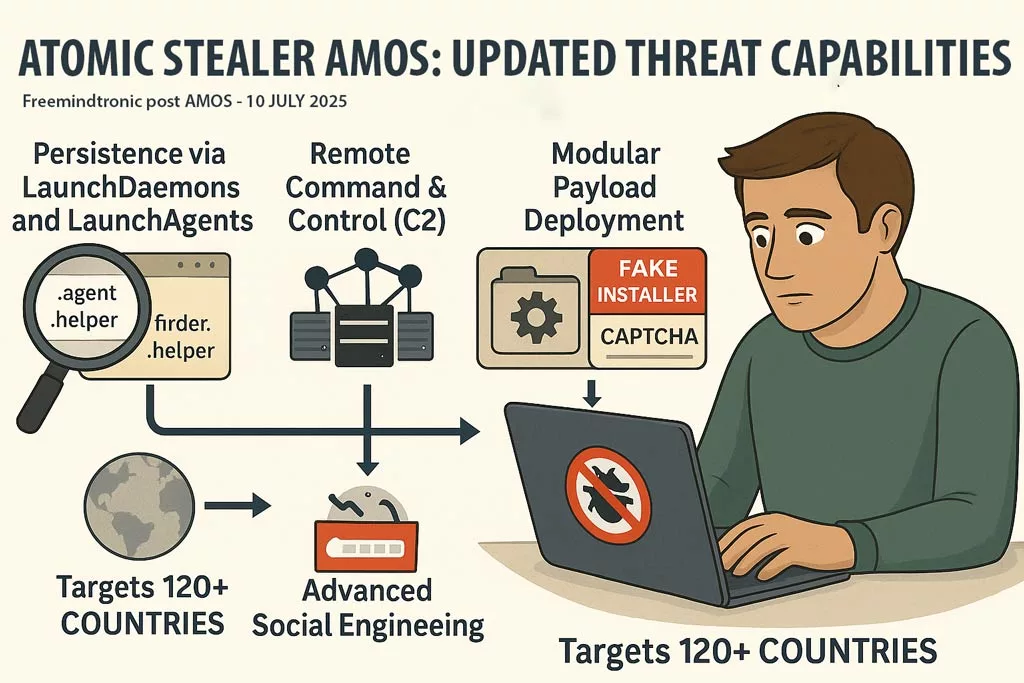
✪ Illustration showing Atomic Stealer AMOS breaching Apple’s ecosystem, using stealthy exfiltration methods across macOS environments.
New Backdoor: Persistent and Programmable
In early July 2025, Moonlock – MacPaw’s cybersecurity arm – confirmed a significant upgrade: AMOS now installs a hidden backdoor (via .helper/.agent + LaunchDaemon), which survives reboots and enables remote command execution or additional payload delivery — elevating its threat level dramatically
A Threat Engineered for Human Habits
Atomic Stealer AMOS didn’t rely on zero-days or brute force. It exploited something far more predictable: human behavior.
Freelancers seeking cracked design plugins. Employees clicking “update” on fake Zoom prompts. Developers installing browser extensions without scrutiny. These seemingly minor actions triggered full system compromise.
Once deployed, AMOS used AppleScript prompts to request credentials and XOR-encrypted payloads to evade detection. It embedded itself via LaunchAgents and LaunchDaemons, securing persistence across reboots.
✪ A visual breakdown of Atomic Stealer’s infection method on macOS, from fake update to credential theft and data exfiltration.
Its targets were no less subtle:
- Passwords saved in Chrome, Safari, Brave
- Data from over 50 crypto wallets (Ledger, Coinomi, Exodus…)
- Clipboard content—often cryptocurrency transactions
- Browser session tokens, including cloud accounts
SpyCloud Labs – Reverse Engineering AMOS
Atomic didn’t crash systems or encrypt drives. It simply harvested. Quietly. Efficiently. Fatally.
Adaptation as a Service
What makes AMOS so dangerous isn’t just its code—it’s the mindset behind it. This is malware designed to evolve, sold as a service, maintained like a product.
| Date | Evolution Milestone |
|---|---|
| Apr 2023 | First sightings in Telegram forums |
| Sep 2023 | ClearFake phishing campaigns weaponize delivery |
| Dec 2023 | Encrypted payloads bypass antivirus detection |
| Jan 2024 | Fake Google Ads launch massive malvertising wave |
| Jul 2025 | Persistent remote backdoor integrated |
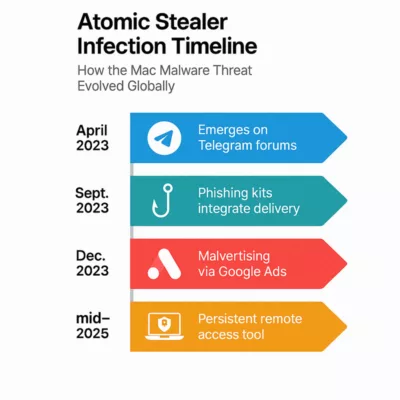
✪ This infographic charts the infection stages of Atomic Stealer AMOS, highlighting key milestones from its emergence via cracked macOS apps to sophisticated phishing and remote access techniques.
Picus Security – MITRE ATT&CK mapping
Two Clicks Away from a Breach
To understand AMOS, you don’t need to reverse-engineer its binaries. You just need to watch how people behave.
In a real-world example, a freelance designer downloaded a cracked font plugin to meet a deadline. Within hours, AMOS drained her wallet, accessed her saved credentials, and uploaded client documents to a remote server.
In a separate case, a government office reported unusual login activity. Investigators found a spoofed Slack update triggered the breach. It wasn’t Slack. It was AMOS.
✪ Illustration depicting the dual nature of Atomic Stealer (AMOS) attacks: a freelancer installing a cracked plugin and a government employee clicking a fake Slack update, both leading to data theft and wallet drain.
Institutional Blind Spots
In 2024, Red Canary flagged Atomic Stealer among the top 10 macOS threats five times. A year later, it had infected over 2,800 websites, distributing its payload via fake CAPTCHA overlays—undetectable by most antivirus suites.
Cybersecurity News – 2,800+ infected websites
AMOS breached:
- Judicial systems (document leaks)
- Defense ministries (backdoor surveillance)
- Health agencies (citizen data exfiltration)

✪ A choropleth heatmap visualizing the global spread of Atomic Stealer AMOS malware, highlighting red zones of high infection (USA, Europe, Russia) and a legend indicating severity levels.
Detecting the Undetectable
AMOS leaves subtle traces:
- Browser redirects
- Unexpected password resets
- .agent or .runner processes
- Apps flickering open
To mitigate:
- Update macOS regularly
- Use Little Snitch or LuLu
- Audit ~/Library/LaunchAgents
- Avoid unverified apps
- Never run copy-paste terminal commands
✪ This infographic checklist outlines 5 key reflexes to detect and neutralize Atomic Stealer (AMOS) infections on macOS systems.
Threat Actor Profile: Who’s Behind AMOS?
While AMOS has not been officially attributed to a specific APT group, indicators suggest it was developed by Russian-speaking actors, based on:
- Forum discussions on Russian-language Telegram groups
- Code strings and comments in Cyrillic
- Infrastructure overlaps with known Eastern European malware groups
These threat actors are not simply financially motivated. The precision, modularity, and persistence of AMOS suggests potential use in state-adjacent cyber operations or intelligence-linked campaigns.
Its evolution also parallels other known cybercrime ecosystems operating in Russia and Belarus, often protected by a “hands-off” doctrine as long as they avoid targeting domestic networks.
Malware-as-a-Service: Industrial Grade
- Custom builds with payload encryption
- Support and distribution via Telegram
- Spread via ClickFix and malvertising
- Blockchain-based hosting using EtherHiding

✪ Écosystème MaaS d’Atomic Stealer comparé à Silver Sparrow et JokerSpy, illustrant ses tactiques uniques : chiffrement XOR, exfiltration crypto, AppleScript et diffusion via Telegram.
| Malware Name | Year | Tactics | Unique to AMOS |
|---|---|---|---|
| Silver Sparrow | 2021 | Early Apple M1 compatibility | ✗ |
| JokerSpy | 2023 | Spyware in Python, used C2 servers | ✗ |
| Atomic Stealer | 2023–2025 | MaaS, XOR encryption, AppleScript, wallet exfiltration | ✅ |
AMOS combines multiple threat vectors—social engineering, native scripting abuse, and crypto-focused data harvesting—previously scattered across different strains.
Strategic Exposure: Who’s at Risk
| Group | Severity | Vector |
|---|---|---|
| Casual Users | High | Browser extensions |
| Crypto Traders | Critical | Clipboard/wallet interception |
| Startups | Severe | Slack/Teams compromise |
| Governments | Extreme | Persistent surveillance backdoors |
What Defenders Fear Next
The evolution isn’t over. AMOS may soon integrate:
- Biometric spoofing (macOS Touch ID)
- Lateral movement in creative agencies
- Steganography-based payloads in image files
Security must not follow. It must anticipate.
Strategic Outlook Atomic Stealer AMOS
- GDPR breaches from exfiltrated citizen data (health, justice)
- Legal risks for companies not securing macOS endpoints
- Cross-border incident response complexities due to MaaS
- Urgent need to update risk models to treat Apple devices as critical infrastructure
Threat Actor Attribution: Who’s Really Behind AMOS?
While Atomic Stealer (AMOS) has not been officially attributed to any known APT group, its evolution and operational model suggest the involvement of a Russian-speaking cybercriminal network, possibly APT-adjacent.
The malware’s early presence on Russian-language Telegram groups, combined with:
- Infrastructure linked to Eastern Europe,
- XOR obfuscation and macOS persistence techniques,
- and a sophisticated Malware-as-a-Service support network
…indicate a semi-professionalized developer team with deep technical access.
Whether this actor operates independently or under informal “state-blind tolerance” remains unclear. But the outcome is strategic: AMOS creates viable access for both criminal monetization and state-aligned espionage.
Related reading: APT28’s Campaign in Europe
Indicators of Compromise (IOCs)
Here are notable Indicators of Compromise for Atomic Stealer AMOS:
File Hashes
- fa34b1e87d9bb2f244c349e69f6211f3 – Encrypted loader sample (SHA256)
- 9d52a194e39de66b80ff77f0f8e3fbc4 – macOS .dmg payload (SHA1)
Process Names / Artifacts
- .atomic_agent or .launch_daemon
- /Library/LaunchAgents/com.apple.atomic.*
- /private/tmp/atomic/tmp.log
C2 IPs / Domains (as of Q2 2025)
- 185.112.156.87
- atomicsec[.]ru
- zoom-securecdn[.]net
Behavioral
- Prompt for keychain credentials using AppleScript
- Sudden redirection to fake update screens
- Unusual clipboard content activity (crypto strings)
These IOCs are dynamic. Correlate with updated threat intel feeds.
Defenders’ Playbook: Active Protection
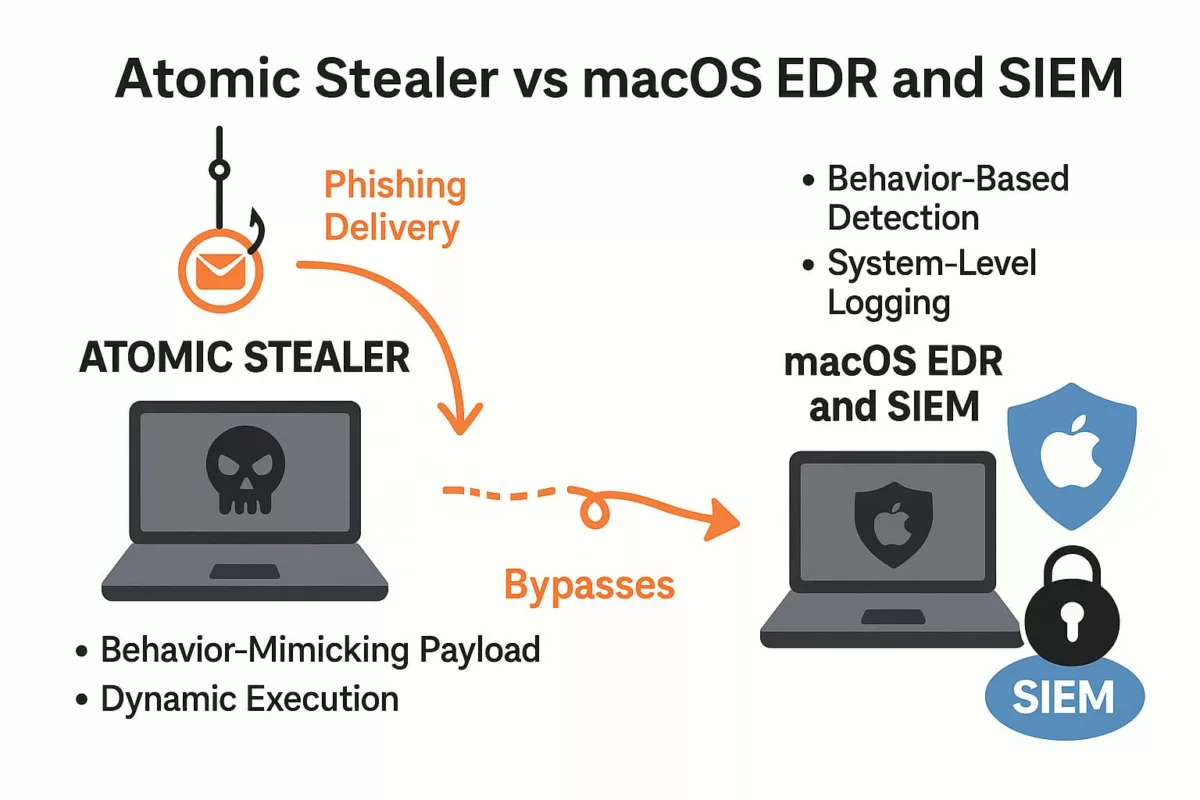
✪ Security teams can proactively counter AMOS using a layered defense model:
SIEM Integration (Ex: Splunk, ELK)
- Monitor execution of osascript and creation of LaunchAgents
- Detect access to ~/Library/Application Support with unknown binaries
- Alert on anomalous clipboard behavior or browser token access
EDR Rules (Ex: CrowdStrike, SentinelOne)
- Block unsigned binaries requesting keychain access
- Alert on XOR-obfuscated payloads in user directories
- Kill child processes of fake Zoom or Slack installers
Sandbox Testing
- Detonate .dmg and .pkg in macOS VM with logging enabled
- Watch for connections to known C2 indicators
- Evaluate memory-only behaviors in unsigned apps
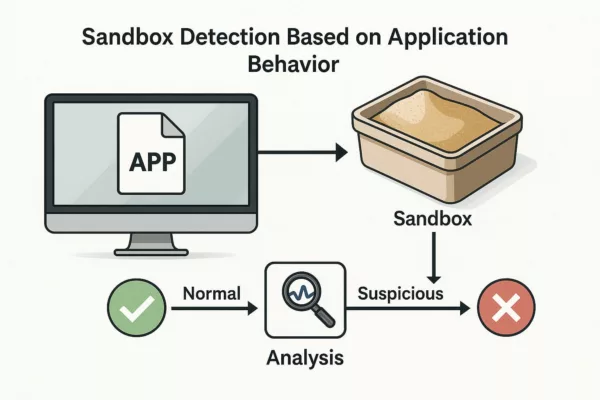
General Hygiene
- Remove unverified extensions and “free” tools
- Train users against fake updates and cracked apps
- Segment Apple devices in network policy to enforce Zero Trust
AMOS is stealthy, but its behaviors are predictable. Behavior-based defenses offer the best chance at containment.
Freemindtronic Solutions to Secure macOS
To counter threats like Atomic Stealer, Freemindtronic provides macOS-compatible hardware and software cybersecurity solutions:
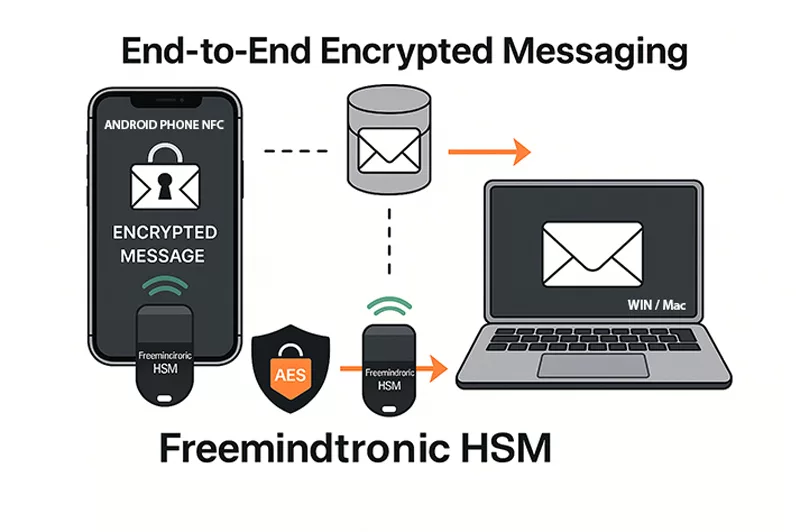
DataShielder: Hardware Immunity Against macOS Infostealers
DataShielder NFC HSM
- Offline AES-256 and RSA 4096 key storage: No exposure to system memory or macOS processes.
- Phishing-resistant authentication: Secure login via NFC, independent from macOS.
- End-to-end encrypted messaging: Works even for email, LinkedIn, and QR-based communications.
- No server, no account, no trace: Total anonymity and data control.
DataShielder HSM PGP
- Hardware-based PGP encryption for files, messages, and emails.
- Zero-trust design: Doesn’t rely on macOS keychain or system libraries.
- Immune to infostealers: Keys never leave the secure hardware environment.
Use Cases for macOS Protection
- Securing Apple Mail, Telegram, Signal messages with AES/PGP
- Protecting crypto assets via encrypted QR exchanges
- Mitigating clipboard attacks with hardware-only storage
- Creating sandboxed key workflows isolated from macOS execution
These tools shift the attack surface away from macOS and into a secure, externalized hardware vault.
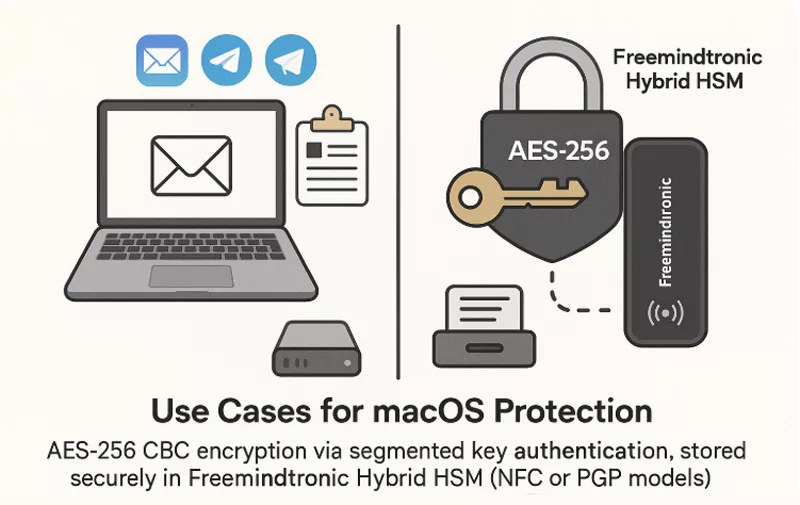
✪ Hybrid HSM from Freemindtronic securely stores AES-256 encryption keys outside macOS, protecting email and messaging apps like Apple Mail, Signal, and Telegram.
SeedNFC HSM Tag
Hardware-Secured Crypto Wallets — Invisible to Atomic Stealer AMOS
Atomic Stealer (AMOS) actively targets cryptocurrency wallets and clipboard content linked to crypto transactions. The SeedNFC HSM 100 Tag, powered by the SeedNFC Android app, offers a 100% externalized and offline vault that supports up to 50 wallets (Bitcoin, Ethereum, and others), created directly on the blockchain.
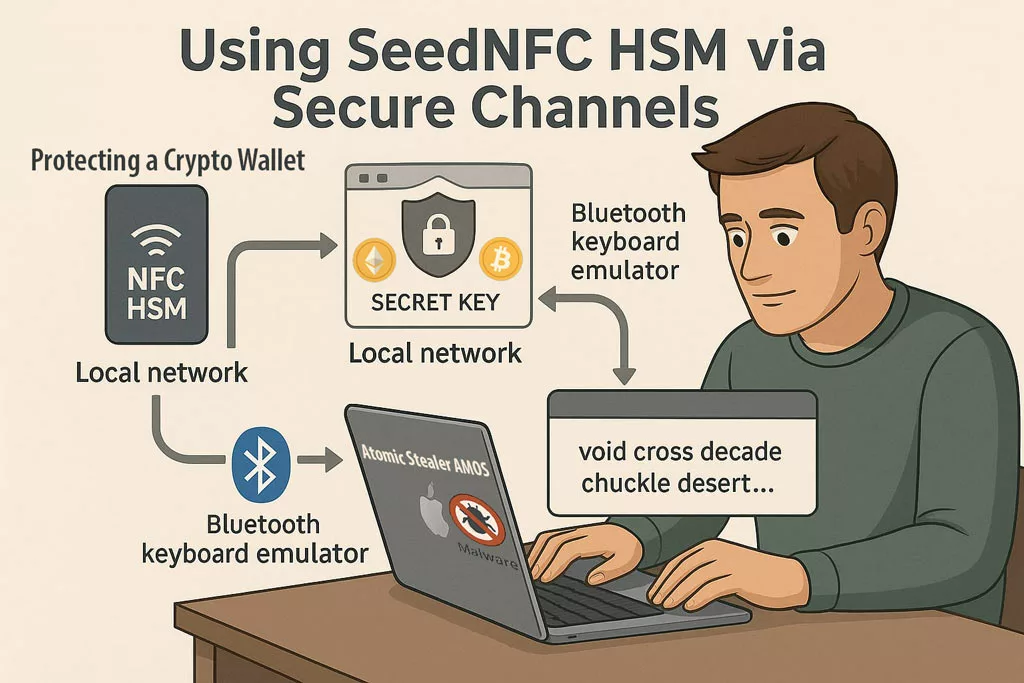
✪ Even if Atomic Stealer compromises the macOS system, SeedNFC HSM keeps crypto secrets unreachable via secure local or Bluetooth emulation channels.
Unlike traditional browser extensions or software wallets:
Private keys are stored fully offline — never touch system memory or the clipboard.
Wallets can be used on macOS and Windows via:
- Web extensions communicating over an encrypted local network,
- Or via Bluetooth keyboard emulation to inject public keys, passwords, or transaction data.
- Wallet sharing is possible via RSA-4096 encrypted QR codes.
-
All functions are triggered via NFC and executed externally to the OS.
This creates a Zero Trust perimeter for digital assets — ideal against crypto-focused malware like AMOS.
Bluetooth Keyboard Emulator
Zero-Exposure Credential Delivery — No Typing, No Trace
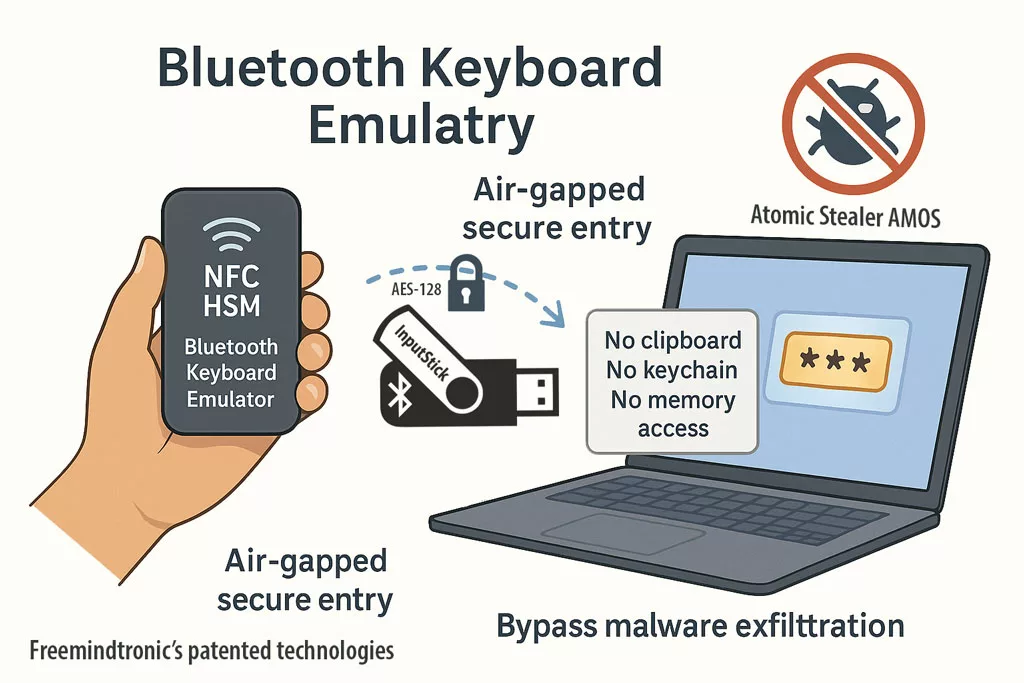
✪ Freemindtronic’s patented NFC HSM delivers secure, air-gapped password entry via Bluetooth keyboard emulation — immune to clipboard sniffers, and memory-based malware like AMOS.
Since AMOS does not embed a keylogger, it relies on clipboard sniffing, browser-stored credentials, and deceptive interface prompts to steal data.
The Bluetooth Keyboard Emulator bypasses these vectors entirely. It allows sensitive information to be typed automatically from a NFC HSM device (such as DataShielder or PassCypher) into virtually any target environment:
- macOS and Windows login screens,
- BIOS, UEFI, and embedded systems,
- Shell terminals or command-line prompts,
- Sandboxed or isolated virtual machines.
This hardware-based method supports the injection of:
- Logins and passwords
- PIN codes and encryption keys (e.g. AES, PGP)
- Seed phrases for crypto wallets
All credentials are delivered via Bluetooth keyboard emulation:
- No clipboard usage
- No typing on the host device
- No exposure to OS memory, browser keychains, or RAM
This creates a physically segmented, air-gapped credential input path — completely outside the malware’s attack surface. Against threats like Atomic Stealer (AMOS), it renders data exfiltration attempts ineffective by design.
Bluetooth keyboard emulation bypasses AMOS exfiltration entirely. Credentials are securely “typed” into systems from NFC HSMs, without touching macOS memory or storage.
What About Passkeys and Private Keys?
While AMOS is not a keylogger, it doesn’t need to be — because it can access your Keychain under the right conditions:
- Use native macOS tools (e.g.,
securityCLI, Keychain API) to extract saved secrets - Retrieve session tokens and autofill credentials
- Exploit unlocked sessions or prompt fatigue to access sensitive data
Passkeys, used for passwordless login via Face ID or Touch ID, are more secure due to Secure Enclave, yet:
- AMOS can hijack authenticated sessions (e.g., cookies, tokens)
- Cached WebAuthn tokens may be abused if the browser remains active
- Keychain-stored credentials may still be exposed in unlocked sessions
Why External Hardware Security Modules (HSMs) Are Critical
Unlike macOS Keychain, Freemindtronic’s NFC HSM and HSM PGP solutions store secrets completely outside the host system, offering true air-gap security and malware immunity.
Key advantages over macOS Keychain:
- No clipboard or RAM exposure
- No reliance on OS trust or session state
- No biometric prompt abuse
- Not exploitable via API or command-line tools
✪ This infographic compares the vulnerabilities of macOS Keychain with the security of Freemindtronic’s NFC HSM technologies, showing how they resist Atomic Stealer AMOS threats.
Three Isolated Access Channels – All AMOS-Resistant
1. Bluetooth Keyboard Emulator (InputStick)
- Sends secrets directly via AES-128 encrypted Bluetooth HID input
- Works offline — ideal for BIOS, command-line, or sandboxed systems
- Not accessible to the OS at any point
2. Local Network Extension (DataShielder / PassCypher)
- Ephemeral symmetric key exchange over LAN
- Segmented key architecture prevents man-in-the-middle injection
- No server, no database, no fingerprint
3. HSM PGP for Persistent Secrets
- Stores secrets encrypted in AES-256 CBC using PGP
- Works with web extensions and desktop apps
- Secrets are decrypted only in volatile memory, never exposed to disk or clipboard
If your credentials live in macOS, they’re fair game. If they live in NFC HSMs or PGP HSMs — with no OS, clipboard, or RAM exposure — they’re not.
PassCypher Protection Against Atomic Stealer AMOS
PassCypher solutions are highly effective in neutralizing AMOS’s data exfiltration techniques:
PassCypher NFC HSM
- Credentials stored offline in an NFC HSM, invisible to macOS and browsers.
- No use of macOS keychain or clipboard, preventing typical AMOS capture vectors.
- One-time password insertion via Bluetooth keyboard emulation, immune to keyloggers.
PassCypher HSM PGP
- Hardware-secured PGP encryption/decryption for emails and messages.
- No token or password exposure to system memory.
- Browser integration with zero data stored locally — mitigates web injection and session hijacking.
Specific Protections
| Attack Vector Used by AMOS | Mitigation via PassCypher |
|---|---|
| Password theft from browsers | No password stored in browser or macOS |
| Clipboard hijacking | No copy-paste use of sensitive info |
| Fake login prompt interception | No interaction with native login systems |
| Keychain compromise | Keychain unused; HSM acts as sole vault |
| Webmail token exfiltration | Tokens injected securely, not stored locally |
These technologies create a zero-trust layer around identity and messaging, nullifying the most common AMOS attack paths.
Atomic Stealer AMOS and the Future of macOS Security Culture

✪ Atomic doesn’t just expose flaws in Apple’s defenses. It dismantles our assumptions.
For years, users relied on brand prestige instead of security awareness. Businesses excluded Apple endpoints from serious defense models. Governments overlooked creative and administrative Macs as threats.
That era is over.
Atomic forces a cultural reset. From now on, macOS security deserves equal investment, equal scrutiny, and equal priority.
It’s not just about antivirus updates. It’s about behavioral change, threat modeling, and zero trust applied consistently—across all platforms.
Atomic Stealer will not be the last macOS malware we face. But if we treat it as a strategic wake-up call, it might be the last we underestimate.
If your credentials live in macOS, they’re fair game. If they live in NFC HSMs with no OS or network dependency, they’re not.
Strategic Note
Atomic Stealer is not a lone threat—it’s a blueprint for hybrid cyber-espionage. Treating it as a one-off incident risks underestimating the evolution of adversarial tooling. Defense today requires proactive anticipation, not reactive response.
Spearphishing APT29 Europe: Unveiling Russia’s Cozy Bear Tactics
APT29 SpearPhishing: Russia’s Stealthy Cyberespionage Across Europe APT29, also known as Cozy Bear or The Dukes, a highly sophisticated Russian statesponsored cyberespionage group, has conducted persistent spearphishing campaigns against a wide range of European entities. Their meticulously planned attacks often target diplomatic missions, think tanks, and highvalue intelligence targets, with the primary objective of longterm intelligence gathering and persistent access. This article provides an indepth analysis of the evolving spearphishing techniques employed by APT29 and outlines essential strategies for robust prevention and detection.
APT29 SpearPhishing Europe: A Stealthy LongTerm Threat
APT29 spearphishing Europe campaigns highlight a persistent and highly sophisticated cyberespionage threat orchestrated by Russia’s Foreign Intelligence Service (SVR), known as Cozy Bear. Active since at least 2008, APT29 has become synonymous with stealthy operations targeting European institutions through phishing emails, Microsoft 365 abuse, supply chain compromises, and persistent malware implants. Unlike APT28’s aggressive tactics, APT29’s approach is patient, subtle, and highly strategic—favoring covert surveillance over immediate disruption. This article examines APT29’s tactics, European targeting strategy, technical indicators, and how sovereign solutions like DataShielder and PassCypher help organizations defend against Russian longterm cyber espionage campaigns.
APT29’s Persistent Espionage Model: The Art of the Long Game in Europe
APT29’s operational model is defined by stealth, longevity, and precision. Their goal is not shortterm chaos but sustained infiltration. Their campaigns frequently last months—or years—without being detected. APT29 rarely causes disruption; instead, it exfiltrates sensitive political, diplomatic, and strategic data across Europe.
APT29 often custombuilds malware for each operation, designed to mimic legitimate network activity and evade common detection tools.
Covert Techniques and Key Infiltration Methods
APT29’s longterm access strategy hinges on advanced, covert methods of penetration and persistence:
Custom Backdoors
Backdoors like “WellMess” and “WellMail” use encrypted communications, steganography, and cloud services to evade inspection. They also include antianalysis techniques such as antiVM and antidebugging code to resist forensic examination.
Supply Chain Attacks
The SolarWinds Orion attack in 2020 remains one of the largest breaches attributed to APT29. This compromise of the supply chain allowed attackers to infiltrate highvalue targets via trusted software. The SUNBURST and TEARDROP implants enabled stealthy lateral movement.
SpearPhishing from Compromised Diplomatic Sources
APT29’s phishing operations often originate from hijacked diplomatic email accounts, lending legitimacy to phishing attempts. These emails target government bodies, international organizations, and embassies across Europe.
Credential Harvesting via Microsoft 365
APT29 abuses cloud infrastructure by executing OAuth consent phishing, targeting legacy authentication protocols, and compromising user credentials to access SharePoint, Outlook, and cloudstored documents.
GRAPELOADER and WINELOADER: New Malware Lures in 2025
In April 2025, APT29 launched a phishing campaign dubbed SPIKEDWINE, impersonating a European Ministry of Foreign Affairs and inviting victims to fake winetasting events. These emails, sent from domains like bakenhof[.]com and silry[.]com, delivered malware via a file named “wine.zip.”
The attack chain begins with GRAPELOADER, a previously undocumented loader, followed by a new variant of the WINELOADER backdoor. This multistage infection shows evolving sophistication in malware design, timing of payload execution, and evasion techniques. The campaign’s targets include multiple European Ministries of Foreign Affairs and nonEuropean embassies in Europe.
Geopolitical Implications of APT29’s European Operations
APT29’s spear-phishing activities are not just technical threats—they are instruments of Russian geopolitical strategy. The group’s consistent targeting of ministries, embassies, and think tanks across Europe aligns closely with key diplomatic and policy moments.
APT29’s operations often intensify ahead of European elections, EU-NATO summits, or major sanctions announcements. Their goal is not only to steal sensitive intelligence, but to subtly influence policymaking by gaining access to classified assessments, private negotiations, or internal dissent.
Notable examples include:
- The 2016 and 2017 attacks on Norwegian government agencies, including the Ministry of Defense and the Norwegian Labour Party (CCDCOE)
- The 2025 campaign targeting diplomats with wine-tasting lures (Check Point Research)
- The 2023 exploitation of WinRAR CVE-2023-38831 against embassies in Greece, Italy, Romania, and Azerbaijan (National Security Archive)
- APT29’s targeting of German political parties ahead of the 2021 elections (Google Cloud Blog, CSO Online)
APT29 acts as a digital vanguard for Russian hybrid warfare, where cyber operations feed into diplomatic leverage, information warfare, and strategic disruption. Understanding this broader agenda is crucial for shaping European cyber defense beyond the technical dimension.
European Government Responses to APT29: A Patchwork Defense
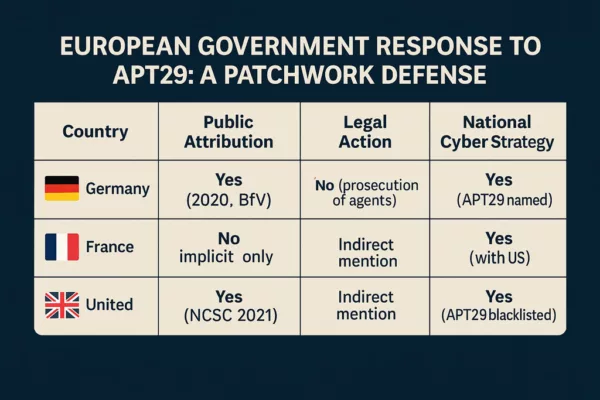
This comparison illustrates the fragmented nature of Europe’s institutional responses to state-sponsored cyber threats. While some nations have clearly identified and named APT29, others remain more cautious or reactive.
What if APT29 Had Not Been Detected?
While some operations were eventually uncovered, many persisted for months or years. Had APT29 remained entirely undetected, the implications for Europe’s political and strategic landscape could have been far-reaching:
- Diplomatic Blackmail: With access to confidential negotiations, APT29 could have leaked selective intelligence to disrupt alliances or blackmail key figures.
- Policy Manipulation: Strategic leaks before elections or summits could steer public opinion, weaken pro-EU narratives, or stall collective defense decisions.
- NATO Cohesion Threats: Exfiltrated defense policy data could be used to exploit divisions between NATO member states, delaying or undermining unified military responses.
- Influence Campaign Fuel: Stolen data could be recontextualized by Russian disinformation actors to construct persuasive narratives tailored to fracture European unity.
This scenario highlights the necessity of early detection and sovereign countermeasures—not merely to block access, but to neutralize the geopolitical utility of the exfiltrated data.
Notable APT29 Incidents in Europe
| Date | Operation Name | Target | Outcome |
|---|---|---|---|
| 2015 | CozyDuke | U.S. & EU diplomatic missions | Long-term surveillance and data theft |
| 2020 | SolarWinds | EU/US clients (supply chain) | 18,000+ victims compromised, long undetected persistence |
| 2021–2023 | Microsoft 365 Abuse | EU think tanks | Credential theft and surveillance |
| 2024 | European Diplomatic | Ministries in FR/DE | Phishing via embassy accounts; linked to GRAPELOADER malware |
| 2025 | SPIKEDWINE | European MFA, embassies | GRAPELOADER + WINELOADER malware via wine-tasting phishing lure |
Timeline Sources & Attribution
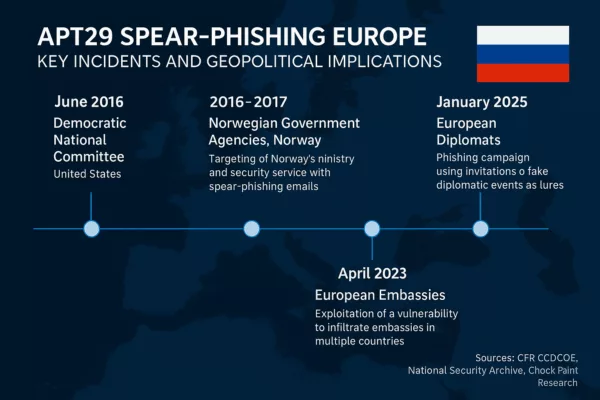
This infographic is based on verified public threat intelligence from:
- Council on Foreign Relations
- Check Point Research
- National Security Archive
- Google Cloud Blog (Mandiant)
- CSO Online
- KnowBe4 Security Blog
These sources confirm that APT29 remains a persistent threat actor with geopolitical aims, leveraging cyber operations as a tool of modern espionage and strategic influence.
APT29 vs. APT28: Divergent Philosophies of Intrusion
| Tactic/Group | APT28 (Fancy Bear) | APT29 (Cozy Bear) |
| Affiliation | GRU (Russia) | SVR (Russia) |
| Objective | Influence, disruption | Longterm espionage |
| Signature attack | HeadLace, CVE exploit | SolarWinds, GRAPELOADER, WINELOADER |
| Style | Aggressive, noisy | Covert, patient |
| Initial Access | Broad phishing, zerodays | Targeted phishing, supply chain |
| Persistence | Common tools, fast flux | Custom implants, stealthy C2 |
| Lateral Movement | Basic tools (Windows) | Stealthy tools mimicking legit activity |
| AntiAnalysis | Obfuscation | AntiVM, antidebugging |
| Typical Victims | Ministries, media, sports | Diplomacy, think tanks, intel assets |
Weak Signals and Detection Opportunities
European CERTs have identified subtle signs that may suggest APT29 activity:
- Unusual password changes in Microsoft 365 without user request
- PowerShell usage from signed binaries in uncommon contexts
- Persistent DNS beaconing to rare C2 domains
- Abnormal OneDrive or Azure file transfers and permission changes
- Phishing emails tied to impersonated ministries and fake event lures
Defensive Strategies: Building European Resilience
Effective defense against APT29 requires:
- ⇨ Hardwarebased MFA (FIDO2, smartcards) to replace SMS/app OTPs
- ⇨ Enforcing least privilege and strict access policies
- ⇨ Monitoring DNS traffic and lateral movement patterns
- ⇨ Deploying EDR/XDR tools with heuristic behavior analysis
- ⇨ Ingesting threat intelligence feeds focused on APT29 TTPs
- ⇨ Running regular threat hunts to detect stealthy TTPs early
Sovereign Protection: PassCypher & DataShielder Against APT29
To counter espionage tactics like those of APT29, Freemindtronic offers two offline, hardwarebased solutions:
- DataShielder NFC HSM: A fully offline, contactless authentication tool immune to phishing and credential replay.
- PassCypher HSM PGP: Stores passwords and cryptographic secrets in a hardware vault, protected from keylogging, memory scraping, and BITB attacks.
Both tools decrypt only in volatile memory, ensuring no data is written locally, even temporarily.
Regulatory Compliance
- ⇨ French Decree No. 20241243: Encryption devices for dualuse (civil/military)
- ⇨ EU Regulation (EU) 2021/821 (latest update 2024)
- ⇨ Distributed exclusively in France by AMG PRO:
Threat Coverage Table: PassCypher & DataShielder vs. APT29
This table evaluates sovereign cyber defenses against known APT29 TTPs.
| Threat Type | APT29 Presence | PassCypher Coverage | DataShielder Coverage |
|---|---|---|---|
| Targeted spearphishing | ✔ | ✔ Secure Input, No Leakage |
✔ Offline Authentication |
| Supply chain compromise | ✔ | ✔ Endtoend encrypted communication; passwords and OTPs decrypted in volatile memory only |
✔ Offline preencryption; data decrypted only in memory during reading |
| Microsoft 365 credential harvesting | ✔ | ✔ Offline Storage, BITB Protection |
✔ Offline Authentication |
| Trusted cloud abuse (OneDrive, Azure) | ✔ | ✔ URL Filtering, Secure Vault |
✔ Offline Authentication |
| Persistent implants | ✔ | ✔ Encrypted session use; keys and OTPs inaccessible without HSM |
✔ Offline encrypted data cannot be used even with full system compromise |
| Exploits via infected documents | ✔ | ✔ Encrypted Sandbox Links |
✔ Encrypted Key Context |
| Phishing via diplomatic accounts | ✔ | ✔ Secure Input, Spoofing Protection |
✔ Offline Credential Isolation |
| Lateral movement (PowerShell) | ✔ | ✔ Credentials isolated by HSM; attacker gains no usable secrets |
✔ Persistent encryption renders accessed data useless |
| DNS beaconing | ✔ | ✔ Decryption keys never online; exfiltrated data stays encrypted |
✔ Offline encrypted messages never intelligible without HSM |
Legend: ✔ = Direct mitigation | ⚠ = Partial mitigation | ✘ = Not covered
Note: PassCypher and DataShielder focus not on preventing all access, but on neutralizing its strategic value. Isolated credentials and persistently encrypted data render espionage efforts ineffective.
Towards a Sovereign and Proactive Defense Against the APT29 Threat in Europe
APT29’s quiet and persistent threat model demands proactive, sovereign responses. Passive, reactive security measures are no longer enough. European organizations must integrate national technologies like PassCypher and DataShielder to ensure digital sovereignty, compartmentalization, and offline security.
The adoption of segmented, resilient, and hardwarebacked architectures enables:
- Independence from cloudbased MFA
- Resistance to credential reuse and session hijacking
- Full data lifecycle control with no data remnants
CISOs, critical infrastructure operators, and government entities must evaluate the security coverage and complementarity of each tool to craft a cohesive strategy against persistent Russian cyber threats.
To explore our full methodology and technical breakdown APT29 read the complete article.
Glossary (for Non-Technical Readers)
- Spear-phishing: A targeted email attack that appears personalized to trick specific individuals into clicking malicious links or attachments.
- C2 (Command and Control) Infrastructure: A network of hidden servers controlled by attackers to manage malware remotely and exfiltrate stolen data.
- OAuth Consent Phishing: A technique where attackers trick users into granting access permissions to malicious applications through legitimate cloud services.
- Anti-VM / Anti-Debugging: Techniques used in malware to avoid being detected or analyzed by virtual machines or security researchers.
- Supply Chain Attack: An attack that compromises trusted software or service providers to distribute malware to their clients.
- Volatile Memory Decryption: A security method where sensitive data is decrypted only in the device’s memory (RAM), never stored unencrypted.
- Persistent Threat: An attacker who remains within a network for a long time without being detected, often for intelligence gathering.

